

A Guide to Sailboat Insurance
Imagine sailing freely on the open seas, wind in your hair and a sense of adventure in your heart. But amidst the exhilaration, don’t forget the importance of protecting your sailboat.
In this guide, we’ll show you how to navigate the world of sailboat insurance, helping you choose the right coverage, avoid common mistakes, and lower your premiums.
So set sail with confidence, knowing that your prized vessel is safeguarded against any unforeseen circumstances.
Table of Contents
Understanding Sailboat Insurance Coverage
You should consider reviewing your sailboat insurance coverage to ensure you’re adequately protected. As someone who values freedom and adventure, it’s important to understand the ins and outs of your insurance policy.
Finding affordable sailboat insurance can be a challenge, but with a few tips and tricks, you can secure the coverage you need without breaking the bank.
When searching for affordable sailboat insurance, start by comparing quotes from different providers. Look for companies that specialize in marine insurance as they may offer better rates and tailored coverage options. Additionally, consider bundling your sailboat insurance with other policies like auto or home insurance to potentially save money.
Understanding liability limits is crucial when it comes to sailboat insurance. Liability coverage protects you in case of accidents or injuries caused by your sailboat. It’s important to assess your risk exposure and choose liability limits that adequately protect your assets. While higher limits may come with a higher premium, they offer greater financial security.
Don’t forget to review the terms and conditions of your sailboat insurance policy. Look for any exclusions or limitations that may affect your coverage. It’s also a good idea to regularly reassess your insurance needs as your sailboat usage and value may change over time.
Types of Sailboat Insurance Policies
When considering sailboat insurance policies, it’s important to thoroughly compare and understand the different types available. Sailboat insurance provides essential protection for your vessel and yourself while out on the open water.
Here are some key types of sailboat insurance policies to consider:
Liability Limits: This type of insurance policy covers any damages or injuries caused to others while operating your sailboat. It’s important to carefully review the liability limits of each policy to ensure you have adequate coverage in the event of an accident.
Coverage Exclusions: It’s crucial to carefully review the coverage exclusions of each policy to understand what isn’t covered. Some common exclusions may include wear and tear, damage caused by improper maintenance, and acts of war or terrorism. Make sure you’re aware of these exclusions to avoid any surprises down the line.
Additional Coverage Options: Many sailboat insurance policies offer additional coverage options that you can choose from based on your specific needs. These options may include coverage for personal belongings on board, emergency towing services, and even coverage for racing events.
Factors to Consider When Choosing Sailboat Insurance
Considering the sailing conditions and intended use of your sailboat is crucial when choosing insurance coverage. There are several factors to consider when selecting sailboat insurance that will best suit your needs.
First, you need to take into account the sailing conditions you typically encounter. Are you sailing in calm waters or do you venture into rough seas? The type of coverage you choose should align with the risks associated with your sailing environment.
Second, think about the intended use of your sailboat. Do you use it for leisurely weekend trips, or do you participate in competitive racing? Different insurance policies offer varying levels of coverage for different uses.
To make it easier for you, here is a table summarizing the factors to consider when choosing sailboat insurance:
Navigating Liability Coverage for Sailboat Owners
There are several key factors to understand and navigate when it comes to liability coverage for sailboat owners, such as the amount of coverage needed and the potential risks involved. It’s important to have a clear understanding of liability limits and how they can protect you in the event of an accident.
Here are some points to consider:
Liability Limits : Determine the appropriate liability limit for your sailboat insurance policy. Higher limits provide more coverage in case of accidents or damages caused by your sailboat. It’s crucial to assess your personal risk tolerance and the potential costs associated with liability claims.
Coverage Exclusions : Familiarize yourself with the coverage exclusions in your policy. These are specific situations or events that may not be covered by your insurance. Understanding the exclusions can help you make informed decisions and potentially avoid costly surprises in the future.
Special Considerations : Take into account any special considerations related to your sailboat. For example, if you plan to charter your boat or participate in races, you may need additional coverage. Discuss these factors with your insurance provider to ensure you have the appropriate coverage for your specific needs.
Protecting Your Sailboat Against Physical Damage
To protect your sailboat against physical damage, it’s important to have insurance coverage that includes accidents and the cost of repairs.
Accidents can happen unexpectedly, whether it’s a collision with another boat or damage caused by severe weather conditions.
Coverage for Accidents
You should definitely check if your sailboat insurance policy includes coverage for accidents caused by collisions with other vessels. Accidents can happen, and the cost of repairs can add up quickly. It’s important to have the proper coverage in place to protect yourself and your investment.
Here are a few common accidents that could occur while sailing:
Collisions with other vessels: Accidents happen, and if your sailboat collides with another boat, it can result in significant damage. Make sure your insurance policy covers this type of accident.
Groundings: Running aground is a common occurrence for sailors, especially in shallow waters. If your sailboat gets stuck on a sandbar or hits a submerged object, it can cause damage to the hull and other parts of the boat.
Storm damage: Severe weather conditions can cause significant damage to your sailboat. High winds, heavy rain, and rough seas can lead to costly repairs.
Having the right insurance coverage can give you peace of mind and protect you from unexpected expenses. Take the time to review your policy and make sure you have the coverage you need.
Cost of Repair?
If your sailboat sustains physical damage, it is important to consider the cost of repair in order to make an informed decision about your insurance coverage. Understanding the cost of repairs will help you evaluate whether it is worth filing an insurance claim or paying out of pocket. To assist you in this process, here is a breakdown of the typical cost of repairs for common sailboat damages:
Specialized Coverage for Racing Sailboats
When it comes to racing sailboats, specialized coverage is essential.
Unlike regular sailboats, racing sailboats have unique policy considerations that need to be taken into account.
From coverage for regattas and races to higher premiums and deductibles, it’s important to understand the specific insurance needs of racing sailboats.
Racing Sailboat Coverage
Make sure your racing sailboat coverage includes specialized coverage for racing events. Racing sailboats require specific insurance coverage to protect against the unique risks involved in competitive sailboat events. Here are three important considerations to keep in mind when selecting your coverage:
Hull Insurance : This coverage will protect your sailboat from damage caused by accidents, such as collisions or grounding during a race.
Liability Insurance : In the fast-paced world of racing sailboats, accidents can happen. Liability insurance will cover any damages or injuries caused to others during a race.
Equipment Insurance : Racing sailboats often have specialized equipment that can be expensive to replace. Ensure your policy covers the cost of repairing or replacing your racing gear, such as sails, rigging, and instruments.
Unique Policy Considerations
There are three important policy considerations to keep in mind when selecting coverage for your racing sailboat.
First, make sure to thoroughly review the policy exclusions. These are the situations or events that your insurance company won’t cover. It’s important to understand these exclusions so that you can plan and prepare accordingly.
Second, pay close attention to the coverage limits. These limits determine the maximum amount that your insurance company will pay in the event of a claim. It’s crucial to assess these limits to ensure that they align with the potential risks and costs associated with racing sailboats.
Premiums and Deductibles
You should carefully consider the premiums and deductibles associated with specialized coverage for your racing sailboat. Sailboat insurance can provide peace of mind and financial protection in case of accidents or damage. To make the most informed decision, here are some key points to consider:
Premium discounts: Look for insurers that offer premium discounts for safety measures such as having a boating safety course, installing safety equipment, or having a clean claims history. These discounts can help reduce your overall insurance costs.
Choosing deductibles: Deductibles are the amount you pay out of pocket before your insurance coverage kicks in. Higher deductibles usually result in lower premiums, but it’s essential to ensure that you can comfortably cover the deductible amount in case of a claim.
Specialized coverage: Racing sailboats often require specialized coverage due to their unique risks. Make sure to evaluate the coverage options available for racing sailboats and choose a policy that adequately protects your investment.
Exploring Additional Coverage Options for Sailboat Insurance
Can you explain the benefits of adding additional coverage options to your sailboat insurance policy?
As a freedom-seeking sailor, you understand the importance of protecting your beloved sailboat from any unforeseen events. Exploring coverage limits and understanding policy exclusions are crucial steps in ensuring comprehensive protection.
By adding additional coverage options to your sailboat insurance policy, you gain peace of mind and the freedom to navigate the open waters without worry.
One of the main benefits of adding extra coverage is the ability to customize your policy to meet your specific needs. You can choose to enhance your coverage for damages caused by natural disasters, such as hurricanes or storms. This ensures that even in the face of nature’s fury, you’ll be financially protected.
Another important coverage option to consider is liability insurance. This protects you in the event that you cause damage to another person’s property or injure someone while operating your sailboat. By having this additional coverage, you can sail with confidence, knowing that you have the means to handle any potential liability claims.
Furthermore, adding coverage for personal belongings onboard your sailboat is essential. This protects your valuable possessions, such as electronics, navigation equipment, and personal belongings, from theft, loss, or damage.
Tips for Lowering Sailboat Insurance Premiums
If you maintain a good sailing record and take a boating safety course, you may qualify for lower sailboat insurance premiums. Here are some tips for reducing sailboat insurance costs and strategies for lowering sailboat insurance premiums:
Shop Around : Don’t settle for the first insurance provider you come across. Take the time to compare different policies and prices to find the best deal for you. Consider factors such as coverage limits, deductibles, and additional benefits.
Increase Deductibles : By opting for a higher deductible, you can lower your insurance premiums. Just make sure you have enough savings to cover the deductible in case of an accident.
Bundle Your Policies : Many insurance companies offer discounts when you bundle your sailboat insurance with other policies such as auto or home insurance. This can lead to significant savings on your premiums.
By following these tips and strategies, you can lower your sailboat insurance premiums and enjoy the freedom of sailing without breaking the bank.
The Claims Process for Sailboat Insurance
To expedite the claims process for sailboat insurance, make sure to promptly report any damages or accidents to your insurance provider. Time is of the essence when it comes to filing a claim, so don’t delay in notifying them about any incidents that occur. By doing so, you’ll help ensure that the claims process runs smoothly and efficiently.
When it comes to the claims process, it’s important to understand the timeline involved. Insurance companies typically have specific timeframes within which you’re required to report and file a claim. Familiarize yourself with these deadlines to avoid any potential complications or delays in receiving your settlement.
In addition to reporting the incident promptly, it’s crucial to gather all necessary documentation to support your claim. This may include photographs of the damage, estimates for repairs, and any relevant police or incident reports. By providing thorough documentation, you can help expedite the claims process and increase the likelihood of a favorable outcome.
Common Mistakes to Avoid When Insuring Your Sailboat
You should always carefully review your sailboat insurance policy to avoid common mistakes that could leave you underinsured in the event of an accident. Sailboat insurance is essential to protect your investment and ensure your peace of mind while out on the open water.
Here are some common mistakes to avoid:
Not understanding liability requirements : It’s crucial to familiarize yourself with the liability requirements set by your state or marina. Failure to comply with these requirements could result in legal consequences and financial burden in case of an accident.
Ignoring coverage limits : Many sailors make the mistake of overlooking the coverage limits in their policy. It’s important to know the maximum amount your insurance company will pay in the event of a claim. If your coverage limit is too low, you may end up having to pay out-of-pocket for damages or injuries.
Neglecting to update your policy : As your sailboat ages or you make modifications, it’s essential to update your insurance policy accordingly. Failing to do so may result in inadequate coverage or even denial of a claim.
By reviewing your sailboat insurance policy, understanding liability requirements, paying attention to coverage limits, and keeping your policy up to date, you can ensure that you have the right coverage in place to protect yourself, your sailboat, and your freedom on the water.
Stay safe and enjoy your adventures worry-free!
Expert Advice on Choosing the Best Sailboat Insurance Policy
When comparing sailboat insurance policies, it’s important to consult with experts who can provide guidance on finding the best coverage for your specific needs. Understanding liability and having adequate coverage for accidents are crucial aspects of sailboat insurance. You want the freedom to explore the open waters without worrying about financial burdens in case of an unfortunate incident.
To begin, liability coverage is essential because accidents can happen, even to the most experienced sailors. Imagine a scenario where your sailboat collides with another vessel, causing damage to both boats and possibly injuring individuals. Without proper liability coverage, you could be held personally responsible for the expenses, which could be financially devastating. So, make sure your policy covers liability for bodily injury and property damage.
Additionally, coverage for accidents is vital. Sailboats are susceptible to various risks, including storms, collisions, and even theft. Accidents can result in significant damage to your boat, leaving you with hefty repair or replacement costs. Having comprehensive coverage that includes accidents will ensure that you’re protected financially if the unexpected occurs.
To find the best sailboat insurance policy, consult with experts who specialize in this field. They can evaluate your needs, explain the various coverage options, and help you find a policy that provides the right protection for your sailboat adventures. Remember, the freedom to sail without worry comes from having the right insurance coverage.
Frequently Asked Questions
Can i insure my sailboat if it is older or in need of repairs.
Yes, you can insure your older sailboat or one that needs repairs. Sailboat insurance providers understand that boats age and require maintenance. They offer coverage options to protect your investment and give you peace of mind.
What Is the Difference Between Agreed Value and Actual Cash Value in Sailboat Insurance?
When it comes to sailboat insurance, understanding the difference between agreed value and actual cash value is crucial. Agreed value ensures you’ll be compensated for the agreed upon value, while actual cash value takes depreciation into account.
Are There Any Discounts Available for Sailboat Insurance if I Have Completed a Boating Safety Course?
Yes, completing a boating safety course can make you eligible for discounts on sailboat insurance. Not only will you save money, but you’ll also gain valuable knowledge that will benefit you on the water.
Does Sailboat Insurance Cover Me if I Sail in International Waters?
Does sailboat insurance cover you when sailing in international waters? You’ll be glad to know that many policies do offer coverage for international sailing, giving you the freedom to explore the open seas worry-free.
Can I Add Coverage for Personal Belongings and Equipment Stored on My Sailboat?
Yes, you can add coverage for your personal belongings and equipment stored on your sailboat. Sailboat insurance offers coverage options for personal belongings and equipment protection, giving you peace of mind while enjoying your freedom on the water.
Scott is a devoted boat enthusiast and provides invaluable insights, tips, and advice on boat insurance coverage, industry trends, and maintenance. Marine Insurance Now is the go-to resource for seasoned boat owners seeking insurance guidance and aspiring sailors embarking on nautical adventures. Scott's expertise and infectious passion make his blog a must-read for boat enthusiasts and is making waves in the boating community.
View all posts
Related Posts

Insights Into Inland Marine Insurance for Small Boats

Collision Boat Insurance: What You Need To Know

The Essentials of Salvage and Wreck Removal Insurance
Affiliate Disclosure - Terms and Conditions - Privacy Policy
Username or Email Address
Remember Me
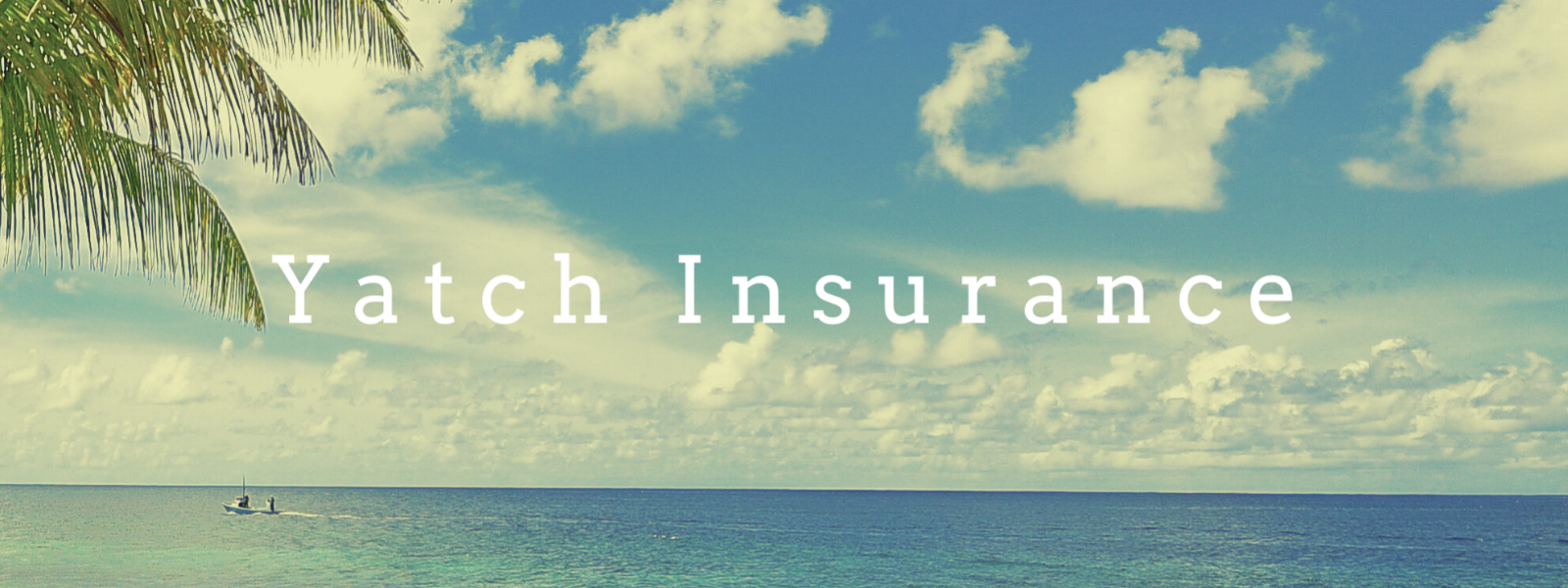
Exploring Yacht Insurance Options for Racing Sailboats
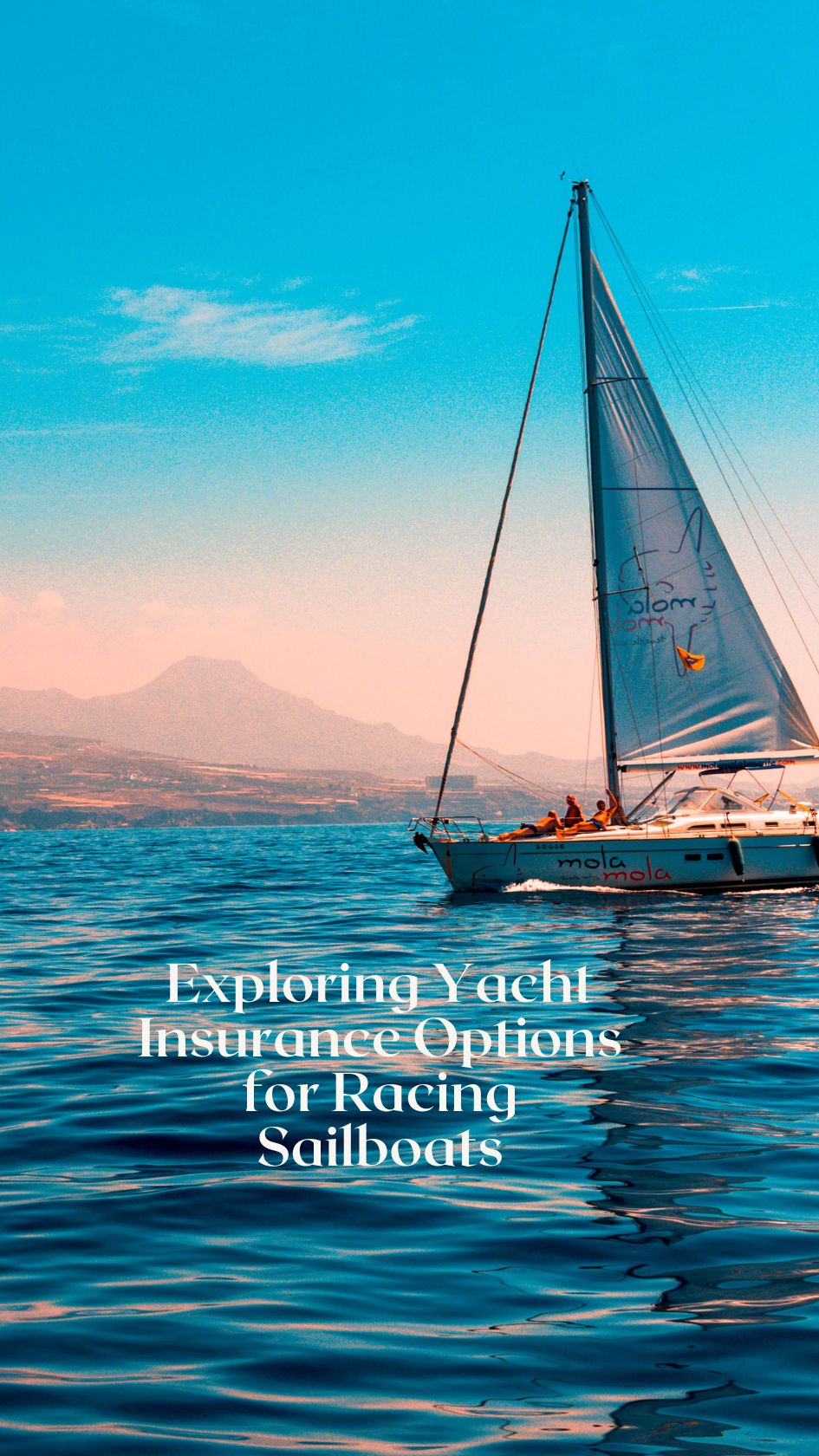
Yacht racing can be a thrilling and rewarding experience, but it also poses a high risk for damage to the boat. It is essential to have the right insurance coverage in place to protect your investment. When exploring yacht insurance options for racing sailboats, it is important to consider policies that cover race-related damages, such as collisions, grounding, and sail damage. Be sure to choose a reputable insurer with experience in covering racing sailboats and read the policy in detail before signing up. With the right insurance coverage, you can enjoy the excitement of yacht racing with peace of mind.
Navigating the Seas of Yacht Insurance: A Guide for Racing Sailboats
When it comes to racing sailboats, there is no doubt that safety is a top priority. One aspect of safety that often goes overlooked, however, is yacht insurance. As a racing sailor , navigating the seas of yacht insurance can be a daunting task, but with the right knowledge and preparation, it doesn’t have to be.
The first step in securing adequate yacht insurance is to understand exactly what you need coverage for. Racing sailboats require a specific type of coverage, as they are often subject to unique risks and hazards that other types of boats are not. It’s important to work with an insurance provider who understands the specific needs of racing sailors and can tailor coverage to fit those needs.
Another key consideration when selecting yacht insurance is the level of coverage. It’s important to have enough coverage to protect your investment in the event of an accident or other incident, but it’s equally important to avoid over-insuring and paying higher premiums than necessary. A qualified insurance provider can help you find the right level of coverage to fit your specific situation.
In addition to understanding the type and level of coverage you need, it’s important to consider other aspects of yacht insurance, such as liability coverage and deductibles. Liability coverage can protect you in the event that you are deemed liable for damages or injuries caused by your boat, while a deductible is the amount you must pay out of pocket before insurance kicks in. Again, working with an experienced yacht insurance provider can help ensure that you have the right amount of coverage in all areas.
Navigating the seas of yacht insurance can be a daunting task for racing sailors, but it doesn’t have to be. With the right knowledge and preparation, you can find the right coverage to protect yourself and your boat, and race with peace of mind. Don’t wait until it’s too late – start exploring yacht insurance options today.
The Importance of Adequate Yacht Insurance Coverage for Competitive Sailboat Racing
Competitive sailboat racing can be a thrilling and rewarding experience. However, it also poses risks and potential damages to your yacht. That is why it is imperative to have adequate yacht insurance coverage.
Yacht insurance covers a broad range of risks, including collision, fire, theft, and weather damage. However, competitive sailboat racing involves more risks and potential damages that require additional coverage.
When you participate in sailboat racing, you are competing against other sailors. The competitive environment can lead to collisions and damage to the yacht and its equipment. With the right insurance coverage, you can rest assured that any damage or losses resulting from racing will be covered.
One aspect to consider when choosing insurance coverage is the navigational limits. Sailboat racing often involves travelling to different locations. Therefore, it is essential to have coverage for the oceanic regions you are planning to sail.
In addition to damage coverage, yacht insurance also offers liability coverage. This type of coverage is crucial in sailboat racing as it provides protection in case of an accident involving other boats or people.
Liability coverage includes bodily injury, property damage, and wreck removal. Wreck removal coverage is particularly crucial in sailboat racing as accidents can occur in remote and challenging locations.
Lastly, it is essential to review your yacht insurance policy regularly. As you participate in more sailboat racing, your insurance needs may change. Make sure your coverage adequately reflects your activities and mitigates your risks.
In conclusion, sailboat racing can be an exciting and thrilling experience. However, it also requires adequate insurance coverage to protect you and your yacht from potential damages and liability claims. Take time to review your coverage regularly and ensure you are adequately protected before setting sail.
- Yacht insurance covers a broad range of risks, including collision, fire, theft, and weather damage.
- When you participate in sailboat racing, the competitive environment can lead to collisions and damage to the yacht and its equipment.
- It is essential to have coverage for the navigational limits, as sailboat racing often involves travelling to different locations.
- Liability coverage includes bodily injury, property damage, and wreck removal.
- Make sure your coverage adequately reflects your activities and mitigates your risks.
< h2 > Comparing Yacht Insurance Options for Racing Sailboats: What to Look For
Are you planning to participate in a sailing race with your beloved sailboat? If yes, it’s important to consider purchasing yacht insurance before hitting the waters. But, with various yacht insurance options available in the market, how do you choose the right one for your racing sailboat? Let’s take a closer look.
First and foremost, you need to determine the type of coverage you require. Racing sailboats have a higher risk of damage compared to others, so you need to focus on getting comprehensive coverage that covers all possible risks.
When comparing yacht insurance options, you need to pay attention to the policy conditions. Look for policies that cover specific sailing regions, such as offshore races, and ensure that it complies with the regulations of the yacht race you plan to participate in.
Another essential factor to consider is the deductibles. Higher deductibles can lower your insurance premium, but it’s essential to balance the cost against the benefits. If you opt for higher deductibles, make sure you have enough savings to pay for the deductible if an accident occurs.
It’s also crucial to compare the limits on your yacht insurance policy. Higher limits provide better protection, but they will come at a higher cost. Analyze your risks to determine the adequate coverage for your sailboat.
Lastly, investigate the coverage for your racing equipment, such as sails and rigging. Consider policies that offer coverage for re-rigging and equipment replacement in case of damage.
In conclusion, yacht insurance for racing sailboats is essential to protect your investment, finances, and ensure peace of mind. Compare policies from different providers and choose the right coverage that meets your needs, budget, and risk tolerance.
Understanding the Fine Print: Common Insurance Clauses for Sailboat Racing
When it comes to sailboat racing, insurance is a must-have. However, understanding the fine print of your policy is crucial to avoid any surprises in the event of an incident. In this article, we’ll dive into some common insurance clauses for sailboat racing.
First and foremost, it’s important to understand the difference between liability and hull insurance. Liability insurance covers any damage or injuries you may cause to someone else or their property while racing. Hull insurance, on the other hand, protects your own vessel in the event of damage or loss.
Another common clause in sailboat racing insurance is the navigational limits. Most policies have specific limits on where and how far you can sail. These limits are often determined by factors such as the size of your vessel, your sailing experience, and the race type.
In addition to navigational limits, some policies have exclusions for certain types of races. For example, offshore or long-distance races may not be covered under some policies. It’s important to review your policy carefully to ensure that the races you plan to participate in are covered.
Furthermore, many policies have clauses regarding maintenance and upkeep of your vessel. Failure to properly maintain your boat could result in a denied claim in the event of an incident. Make sure to keep up with regular maintenance and document all repairs and upgrades to your vessel.
Finally, it’s important to review the deductibles and limits of your policy. A high deductible may result in lower monthly premiums, but could also mean significant out-of-pocket costs in the event of a claim. Additionally, make sure your policy limits are high enough to cover the full value of your vessel in case of a total loss.
As you can see, there are many important clauses and considerations to keep in mind when reviewing your sailboat racing insurance policy. By understanding and adhering to these clauses, you can help ensure a safe and successful racing season.
Risk Management for Racing Sailboats: How Yacht Insurance Factors In
Racing sailboats can be thrilling, but they also bring significant risk. As a responsible boat owner, you should always prioritize the safety of yourself, your crew, and others around you. One way to manage potential risks is by having proper yacht insurance in place.
Yacht insurance provides you with a level of coverage that can protect you from financial losses and liabilities that come with owning a racing sailboat. While insurance may not prevent accidents from happening, it can provide you with peace of mind knowing that you are financially protected.
The type of coverage you need will depend on several factors, such as how often you race, where you sail, and the value of your boat. Many insurers offer customizable policies that allow you to tailor your coverage to your specific needs.
It’s important to note that yacht insurance isn’t just about protecting your boat. It can also cover any injuries sustained by you or your crew, as well as any damage caused to other boats or property. This type of coverage can be crucial in the event of an accident or incident on the water.
When selecting an insurance provider, it’s important to choose one that understands the unique risks associated with racing sailboats. Look for a provider with experience in this area and one that has a track record of providing excellent customer service.
In addition to having proper insurance coverage, there are several other ways to manage risks when racing sailboats. These include:
1. Proper training and education for you and your crew
2. Regular boat maintenance and inspections
3. Following all safety guidelines and regulations
4. Being aware of weather conditions and taking appropriate precautions
5. Always wearing proper safety equipment, such as life jackets
By taking a proactive approach to risk management, you can greatly reduce the likelihood of accidents or incidents on the water. Combined with proper yacht insurance coverage, you can enjoy the thrill of racing sailboats while still prioritizing safety and responsibility.
Final Thoughts: Racing sailboats can be an exhilarating experience, but they also come with significant risks. By having proper yacht insurance in place, you can protect yourself, your crew, and others around you from potential financial losses and liabilities. Remember to always prioritize safety on the water and take a proactive approach to risk management.
Frequently Asked Question
Yacht insurance for racing sailboats is a type of insurance policy that provides coverage for damages, liabilities, and other risks that are associated with participating in boat races.
Yacht insurance for racing sailboats typically covers damage to the boat, liability for injuries or damages caused to others, loss of personal effects, and expenses related to legal defence or investigation. Some policies may also provide coverage for racing equipment, sails, and rigging.
While it is not mandatory to have insurance for casual sailboat races, it is highly recommended to protect yourself in case of accident or injury. Furthermore, some yacht clubs or event organizers may require proof of insurance.
The cost of yacht insurance for racing sailboats can vary greatly based on a number of factors including the boat value, type of racing, location, previous claims history, and coverage limits. It is best to obtain quotes from different insurance providers to compare prices and coverage options.
When choosing a yacht insurance policy for racing sailboats, it is important to look for coverage that specifically addresses your needs as a racer. Make sure the policy covers the types of races you participate in, as some policies may exclude certain types of races. You should also consider the coverage limits, deductibles, and any exclusions. It is a good idea to work with an experienced marine insurance broker who can help guide you through the process.
You may like

Yacht Insurance and Su...

Yacht Insurance for Ch...

Yacht Insurance Companies

Yacht Insurance for Wi...
- Yacht Insurance
- Boat Insurance
- Yacht Charter
- Beginner’s Guide
- Destinations
- Privacy Policy
- Terms & Conditions
Average Sailboat Insurance Cost in 2023 (13 Examples)
Are you in the market for sailboat insurance but unsure of how much it will cost? There are many factors that go into determining the cost of sailboat insurance, including the type of boat and its length. In this article, we will provide you with 13 examples of sailboat insurance costs in 2023 for different types of boats, such as catamarans and daysailers, and different boat lengths ranging from 20 to 50 feet.
On average, sailboat owners typically pay between $250 and $1,500 annually to insure their sailboats. However, the cost can be higher or lower, depending on the coverage options you choose. You can expect to pay up to $4,000 per year when insuring 50-foot sailboats and catamarans.
When it comes to sailboat insurance, many coverage options are available, such as basic coverage, comprehensive coverage, and specialized coverage. Let's find out what's included in each of these coverage options as we further dive into the article below.
- The average cost of insurance depends on the type of your sailboat, the length of your boat, your location, and the use or purpose of your boat.
- Boats with fuel tanks are required to have liability coverage in case of an oil spill or fuel spill. Meanwhile, boats with anchors and electronics are also required to have additional coverage and can increase your insurance premium, especially if they are expensive or if they increase the risk of theft or damage.
- A 50-foot catamaran has the highest insurance cost, averaging up to $4,000 per year.
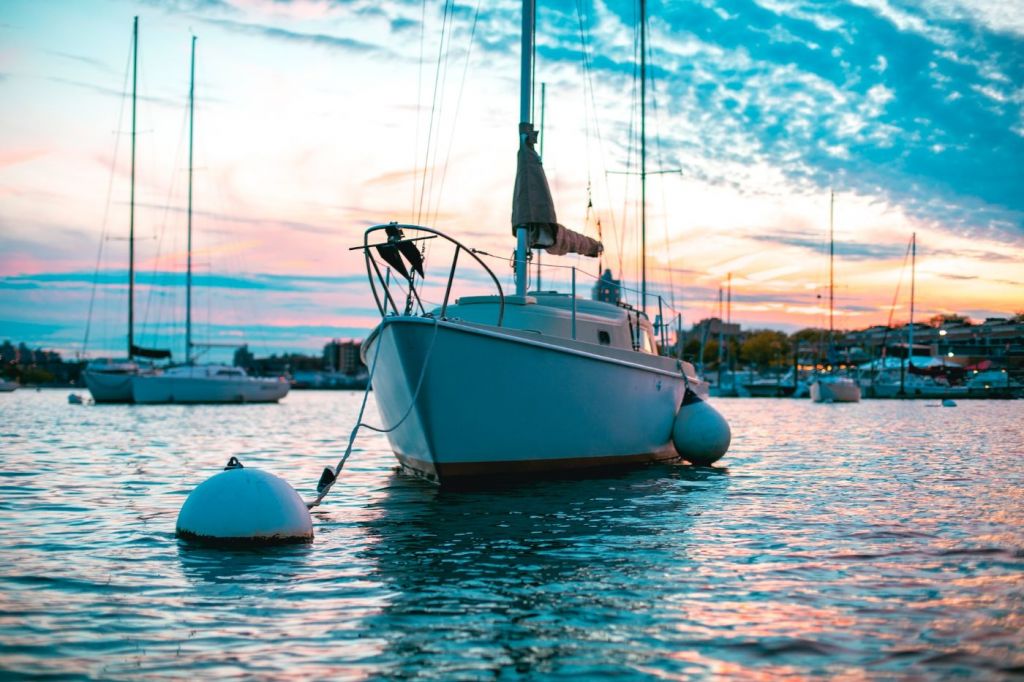
On this page:
13 examples of sailboat insurance costs in 2023, factors affecting sailboat insurance costs, coverage options and their inclusions, insurance costs by boat use, how to reduce sailboat insurance costs.
Sailboat insurance is a type of boat insurance that provides coverage for your sailboat in case of damage or loss. It is an important investment for any boat owner, as it can provide coverage for a wide range of incidents, such as collision damage, bodily injury liability, property damage liability, and more.
Sailboat owners can expect to pay between $250 and $4,000 per year to insure their sailboats. The cost can be higher or lower depending on your coverage options.
Below is a table containing examples of sailboat insurance costs in 2023 to give you a better understanding of what to expect when shopping for sailboat insurance.
Insurance costs for catamaran
Catamarans are popular among sailors because they are stable and offer more space than traditional monohull sailboats. However, catamarans can be more expensive to insure due to their size and complexity . On average, you can expect to pay between $1,500 and $2,500 per year for catamaran insurance.
For a 40-foot catamaran, you can expect to pay up to $3,000 per year for the insurance, and larger catamarans cost even more to insure, with policies for 50-foot catamarans averaging around $4,000 per year.
Insurance costs for different sizes of catamarans can be found in this article: Average Cost of Buying & Owning a Catamaran (With 4 Examples)
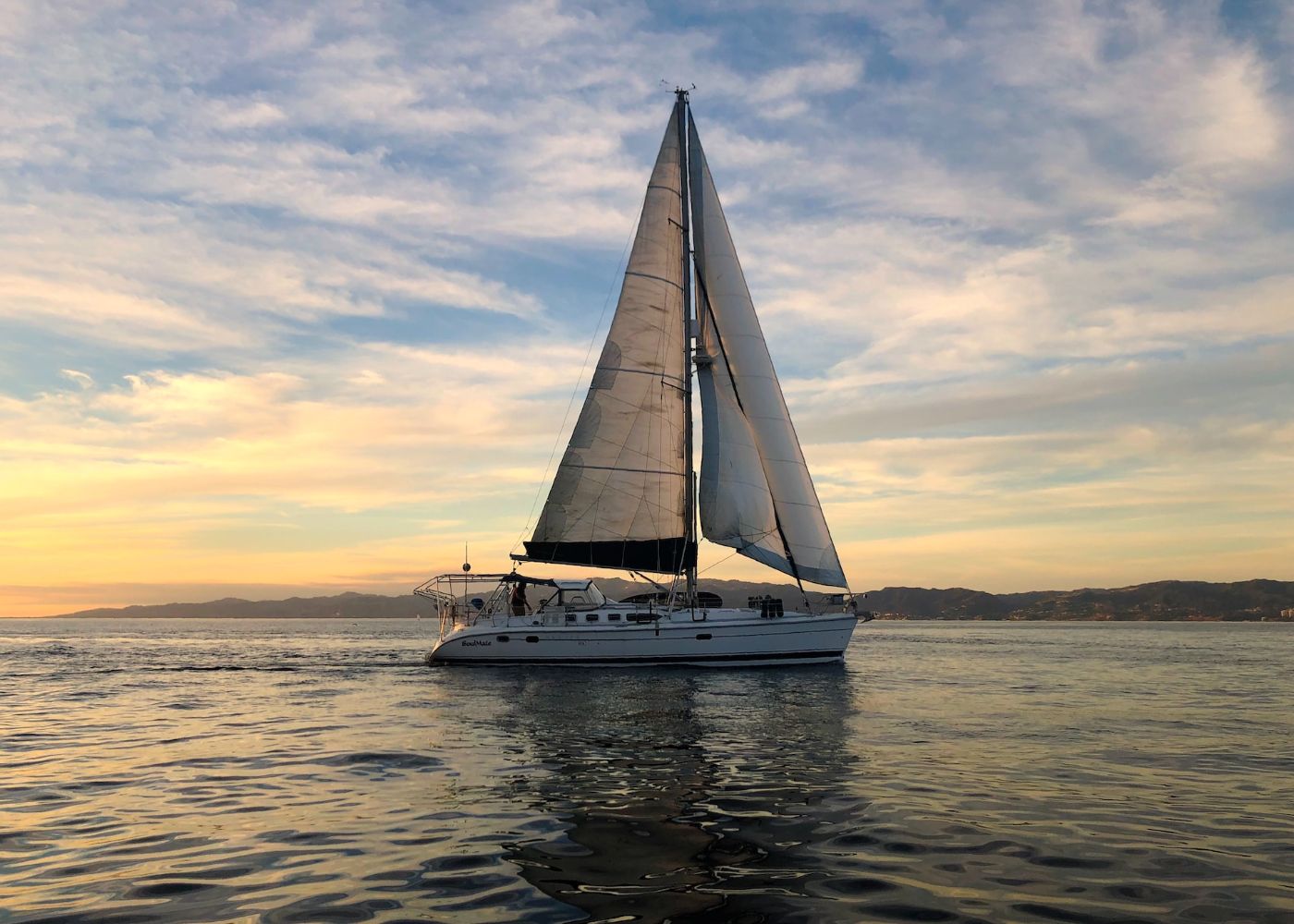
Insurance costs for daysailers
Daysailers are small sailboats designed for day trips and recreational sailing. These boats are typically less expensive to insure than larger sailboats because they are less complex and have a lower risk of damage.
On average, you can expect to pay between $250 and $500 per year for daysailer insurance. For the insurance of a 20-foot daysailer, you might need to pay up to $750 per year. Policies for larger daysailers, such as a 30-footer, can cost around $1,000 per year.
Insurance costs for bluewater boats
Bluewater boats are designed for long-distance cruising and are built to withstand heavy seas and harsh weather conditions. Because of their specialized construction and equipment, bluewater boats can be costly to insure.
On average, you can expect to pay between $1,000 and $2,500 per year to insure a 40-foot bluewater boat. Policies for larger bluewater boats, such as a 50-footer, can cost around $3,500 per year.
Insurance costs for monohulls
Monohulls are the most common type of sailboat and are generally the least expensive to insure. The average cost of insurance for a monohull is between $250 and $1,500 per year, depending on factors such as policy type and coverage amounts.
If you have an older or less expensive monohull, you may be able to get away with only basic coverage, which can cost as little as $250 per year.
Insurance costs for a trimaran
Trimarans are a type of multihull sailboat that have three hulls. Because they are less common than monohulls, insurance costs for trimarans can be slightly higher.
The average cost of insurance for a trimaran is between $500 and $2,500 per year, depending on the size and value of the boat. If you have a larger or more expensive trimaran, you may need to purchase additional coverage, such as agreed-value coverage, which can increase your insurance costs.
Insurance cost for kelch
Kelch sailboats are a type of monohull sailboat that are known for their stability and speed. Insurance costs for Kelch sailboats are similar to those for other monohulls, with an average cost of between $250 and $1,500 per year. However, if you have made any modifications to your Kelch sailboat, such as adding a racing rig or a larger engine, your insurance costs may be higher.
Insurance cost for cutter
Cutter sailboats are a type of monohull sailboat that are known for their versatility and ability to handle a variety of weather conditions. Insurance costs for cutter sailboats are similar to those for other monohulls, with an average cost of between $250 and $1,500 per year . However, if you have a larger or more expensive cutter sailboat, you may need to purchase additional coverage, such as liability coverage, which can increase your insurance costs.
Insurance cost for a sloop
Sloop sailboats are a type of monohull sailboat that has a single mast and a fore-and-aft rig. Insurance costs for sloop sailboats are similar to those for other monohulls, with an average cost of between $250 and $1,500 per year. However, if you have a larger or more expensive sloop sailboat, you may need to purchase additional coverage, such as agreed-value coverage, which can increase your insurance costs.
Insurance cost for dinghy
Dinghies are small, lightweight sailboats that are typically used for racing or day sailing. Insurance costs for dinghies are generally lower than for other types of sailboats, with an average cost of between $100 and $500 per year. However, if you have a high-performance dinghy or if you use your dinghy for racing, your insurance costs may be higher.
Insurance cost for yawl
Yawl sailboats are a type of monohull sailboat that have two masts, with the aft mast shorter than the forward mast. Yawl sailboats can be insured at an average cost between $250 and $1,500 per year.
The length of your sailboat can also affect the cost of your insurance policy. Here are some examples of sailboat insurance costs for boats of different lengths:
Insurance costs for 20-feet boats
If you own a 20-foot sailboat, you can expect to pay an average of $250 to $500 per year for insurance. However, insurance costs may vary depending on the type of boat you own and the amount of coverage you need.
Insurance costs for 30-feet boats
For a 30-foot sailboat, you can expect to pay an average of $500 to $1,000 per year for insurance. Again, this cost can vary depending on the type of boat you own and the amount of coverage you need.
Insurance costs for 50-feet boats
For a 50-foot sailboat, you can expect to pay an average of $2,000 to $3,000 per year for insurance. This is the highest insurance cost range on our list, but it's not surprising given the size and value of these boats.
Insurance costs for new vs. used sailboats
Below is a table summarizing the estimated insurance costs of new and used sailboats based on age:
The actual insurance costs for both new and used sailboats can vary depending on various factors such as the type of boat, its age, location, usage, and the insurance company's policies.
In general, the insurance costs for a new sailboat are typically higher compared to a used sailboat. This is because new sailboats have a higher value and are more expensive to repair or replace in case of damage or loss. On the other hand, used sailboats have a lower value and may have pre-existing wear and tear, which can lower their insurance costs.
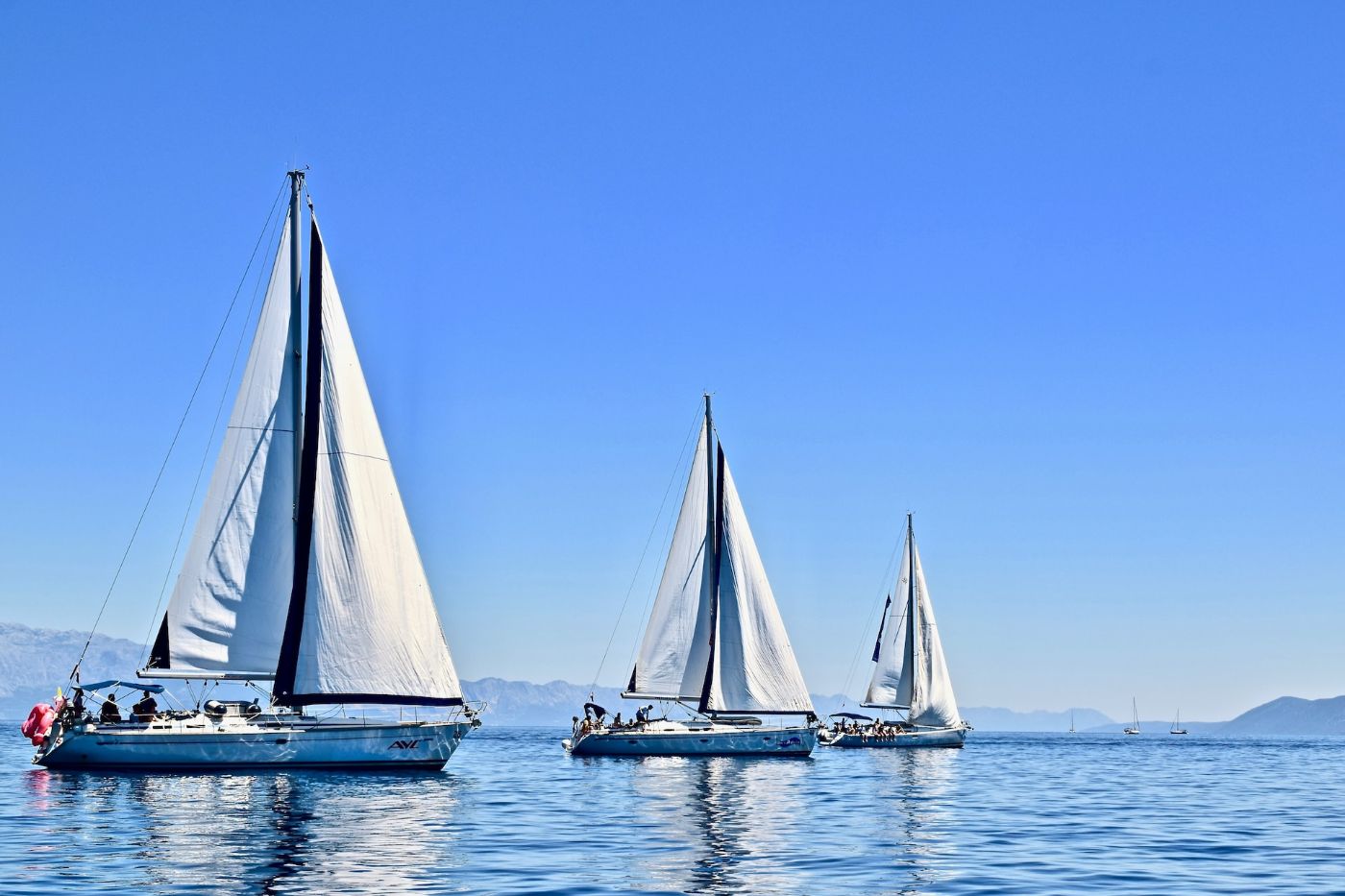
The length and type of sailboat can affect insurance costs
Generally, larger boats and more expensive boats will cost more to insure than smaller boats and less expensive boats. Additionally, different types of boats may have different insurance requirements and costs. For example, catamarans may require different coverage than a daysailer.
The age and condition of your sailboat can impact insurance costs
Older boats or boats in poor condition may be more expensive to insure due to the increased risk of damage or accidents.
The location of your sailboat has an effect on insurance costs
Where you keep your sailboat can also impact your insurance costs. Some areas may be considered higher risk due to weather patterns, theft rates, or other factors, which can result in higher insurance premiums.
Your driving record and experience can also impact insurance costs
If you have a history of accidents or violations, you may be considered a higher risk and may pay more for coverage. Additionally, more experienced sailors may be eligible for lower insurance rates.
Insurance costs can be affected by whether your sailboat is motor-operated or not
If your sailboat has a motor, it can also impact your insurance costs. Generally, sailboats with motors will cost more to insure than those without motors.
The insurance company you choose can impact sailboat insurance costs
The insurance company you choose can also impact your sailboat insurance costs. Different insurance companies may offer different rates, premiums, and discounts, so you may need to shop around and compare quotes before choosing a policy.
Completing safety courses and marine inspection can lower insurance costs
Completing safety courses or having your sailboat inspected by a marine surveyor can also impact your insurance costs. Some insurance companies may offer discounts for completing safety courses or having your boat inspected, as it can reduce the risk of accidents or damage.
Allowing underage operators can affect your insurance costs
If you plan to allow underage operators to drive your sailboat, it can impact your insurance costs. Some insurance companies may require additional coverage or charge higher premiums for underage operators.
Living aboard your sailboat will require additional insurance
If you plan to live aboard your sailboat , you may need to purchase additional coverage or a different type of policy. Liveaboard sailboat insurance can provide coverage for personal belongings, liability, and more, but it may be more expensive than standard sailboat insurance.
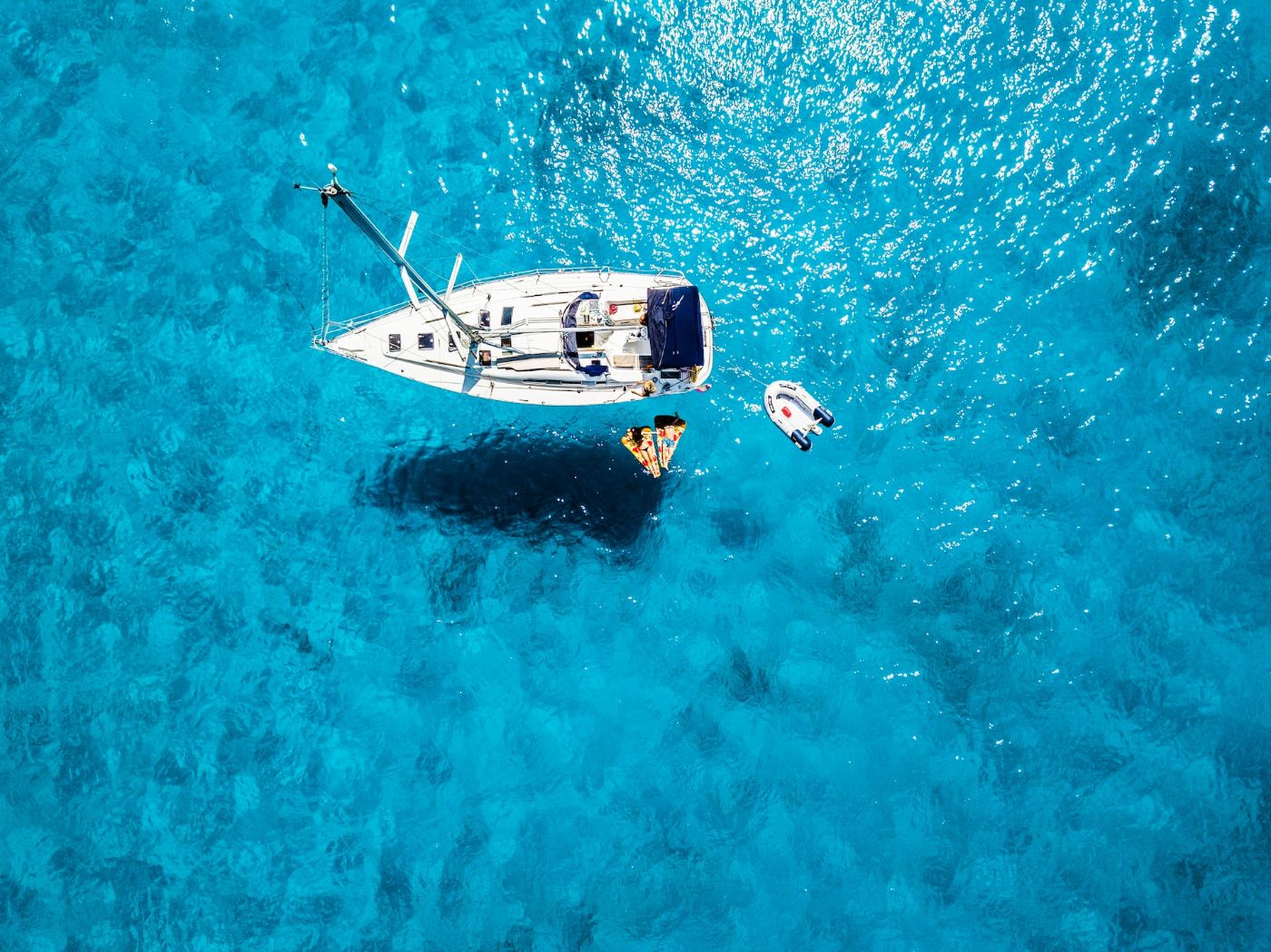
Basic coverage includes liability coverage and damages
Liability coverage protects you if you are found to be at fault for an accident on the water. Damages to your boat may be covered up to a certain amount, depending on your policy.
Comprehensive coverage includes a more extensive form of liability coverage
Comprehensive coverage is a more extensive form of coverage that includes liability coverage as well as coverage for damages to your boat. It may also include coverage for medical expenses and other related costs.
Salvage coverage includes the costs in case of a wreck
In the event of a wreck, salvage coverage can help cover the costs of removing your boat from the water. This can be an expensive process, so you may need to make sure you have adequate coverage.
Specialized coverage includes insurance for specific boat needs
If you have a specialized sailboat, such as a catamaran or a daysailer, you may need specialized coverage. This covers the specific needs of your boat like an expensive prop or navigation equipment. Make sure your policy includes coverage for your specific type of boat.
If you want to know more about boat insurance and what the best insurance should cover, read Boat Insurance Should Cover These 10 Basic Things
When it comes to sailboat insurance costs, the manner in which you use your boat can have a significant impact on the premium.
Boats used for a recreational purpose has a lower insurance
If you're using your sailboat for recreational purposes only, you can expect to pay lower insurance premiums than if you're using it for commercial purposes. Recreational use typically involves activities such as day sailing, cruising, and racing.
Insurance costs for recreational sailboats generally range from $250 to $1,500 per year, depending on factors such as boat length, type, and value.
Boats used in fishing require additional insurance for fishing gears
If you're using your sailboat for fishing, you may need additional coverage for fishing equipment and other gear. Some insurance policies may include coverage for fishing equipment, while others may require you to purchase a separate policy.
Insurance costs for sailboats used for fishing can vary widely depending on factors such as the type and value of the boat, the amount of fishing equipment you have, and the waters you fish in.
Boats with anchors and electronics will need additional insurance
Insurance costs can also be affected by the type of equipment you have on board your sailboat. Anchors, electronics, and other types of gear can increase your insurance premium, especially if they are expensive or if they increase the risk of theft or damage. Make sure to discuss the equipment you have on board with your insurance provider to ensure that you have the appropriate coverage.
Boats transported via trailer will be required an additional coverage
If you transport your sailboat using a trailer, you may need additional coverage for the trailer itself. Some insurance policies may include coverage for trailers, while others may require you to purchase a separate policy.
Insurance costs for trailers can vary widely depending on factors such as the type and value of the trailer, the distance you transport your sailboat, and the frequency of transport.
Boats with fuel tanks are required to have a liability coverage
If your sailboat has a fuel tank, you may be required to carry liability coverage for fuel spills. The cost of this coverage can vary widely depending on factors such as the size of your fuel tank, the type of fuel you use, and the waters you sail in.
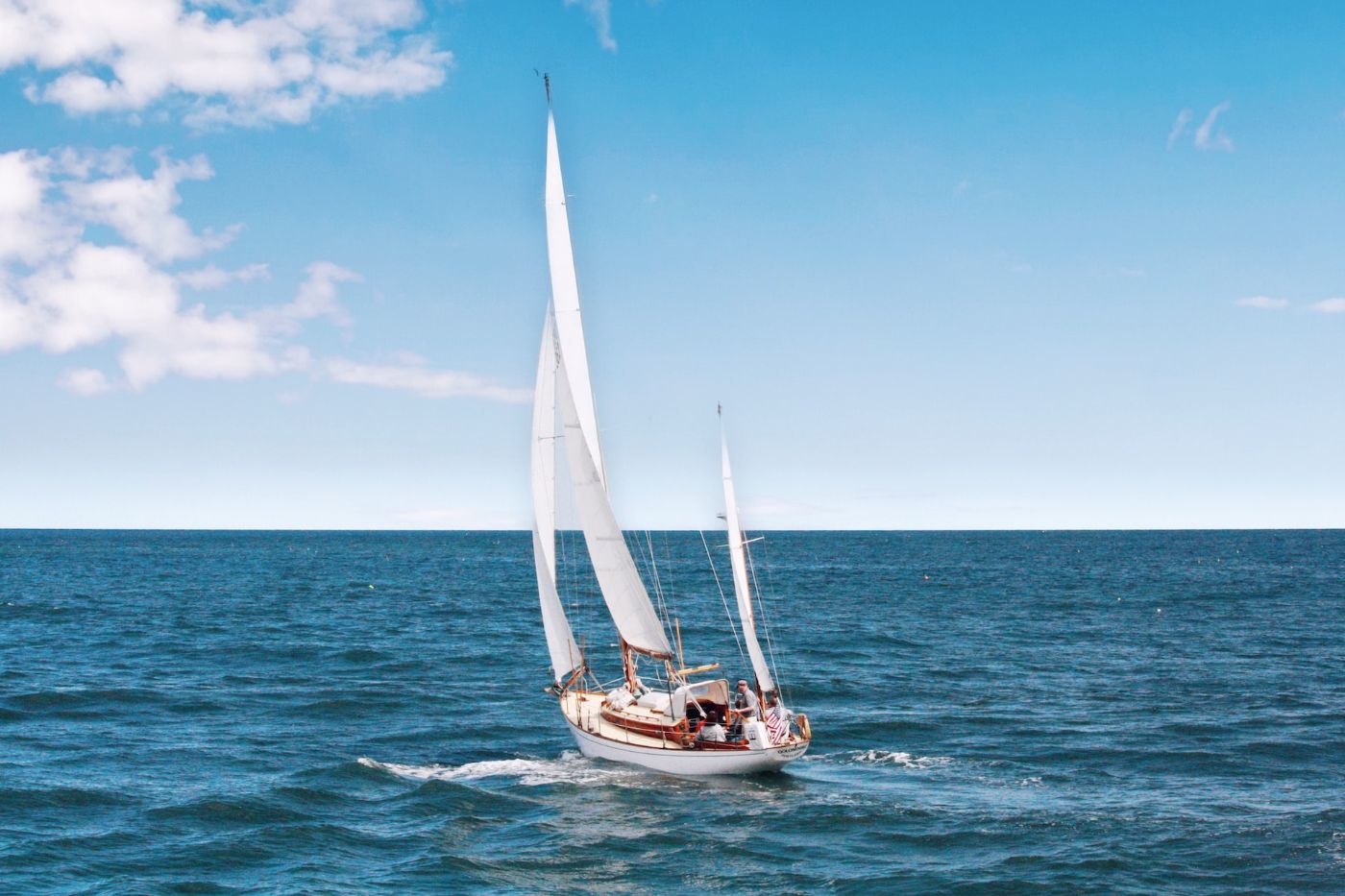
Sailboat insurance can be costly, but there are ways to reduce your premiums and save money. Here are some tips to help you lower your sailboat insurance costs:
Shop around for the best deal
Don't settle for the first insurance company you come across. Get quotes from multiple providers and compare their rates and coverage options. You may be surprised at how much you can save by doing some research and shopping around.
Take advantage of discounts
Many insurance companies offer discounts for various reasons, such as completing a boating safety course, having a clean driving record, or bundling your boat insurance with other policies. Ask your insurance agent about any available discounts and take advantage of them.
Upgrade your boat's safety features
Installing safety equipment on your boat, such as fire extinguishers, smoke detectors, and GPS tracking systems, can help lower your insurance premiums. These safety features reduce the risk of accidents and make your boat less likely to be stolen.
Consider raising your deductible
A higher deductible means you'll pay more out of pocket if you have to file a claim, but it can also lower your monthly premiums. If you have a good safety record and don't anticipate needing to file a claim, raising your deductible can be a good way to save money.
Talk to your insurance agent
Your insurance agent can be a valuable resource for finding ways to save money on your sailboat insurance. They can help you understand your coverage options and recommend ways to reduce your premiums.
Check if your homeowner's insurance covers your boat
If you own a small sailboat, your homeowner's insurance may provide some coverage for it. This can be a cost-effective option if you only use your boat occasionally and don't need comprehensive coverage.
Leave a comment
You may also like, does boat insurance cover sinking.
Insuring your boat is daunting and expensive. There are several types of insurance and they always have conditions on you need to meet. But don't worry, with some …

Boat Insurance Should Cover These 10 Basic Things
Own your first boat within a year on any budget.
A sailboat doesn't have to be expensive if you know what you're doing. If you want to learn how to make your sailing dream reality within a year, leave your email and I'll send you free updates . I don't like spam - I will only send helpful content.
Ready to Own Your First Boat?
Just tell us the best email address to send your tips to:

- Client Login --> Client Login -->

- Yacht Insurance
- Boat Insurance
- Charter Insurance
Grand Prix Yacht Racing Insurance
- Offshore Cruising
- News and Info
- Testimonials
- Get a Quote
- Client Photos
If you have the need for speed, Jack Martin & Associates will provide you with the unique insurance solution for your Grand Prix Racing Yacht. We can cover your racer whether your preference is inshore, offshore, ocean or around the world racing. We have established relationships with over 20 domestic and international carriers, enabling us to put together a niche policy specific to your needs. As with all of our policies, our in house claims concierge service provides you a single point of contact to ensure your claim is expedited appropriately.
Proud Members of:

Your Premier Yacht, Boat & Marine Insurance Agency Since 1929
- Meet our team

Newsletter Signup
We welcome you to sign up for our e-newsletter with valuable insurance information and other helpful boating tips.
Please fill in your name and email and click submit. Thanks, and welcome!
All fields are required.
Check your inbox or spam folder now to confirm your subscription.

- Privacy Statement
- Investments

- Career * Choose Career Personal Business Benefits Boat & Yacht Trucking
Receive Our Updates

Sign up for updates and more

Sail Boat Insurance
The best rates.
From America's boat insurance experts since 1984
Get a Quote
Before setting sail this year, remember that NBOA Marine Insurance offers the best sail boat insurance for every budget. There are several deductible options for your convenience, and complete sail boat coverage options include liability from $100,000 to $1,000,000 and above. NBOA Marine Insurance even covers personal property damage. We will personally work with you to make sure that you have every angle covered so you can enjoy the water with ease.
NBOA Marine Insurance's sailboat insurance also uses "agreed value" coverage, protecting you from depreciating prices. Whether protecting your sailboat from accidents, uninsured boaters or theft, you'll find the most dependable coverage for your needs.
For more information about boat insurance, contact an experienced agent at NBOA Marine Insurance at 1-800-248-3512 or complete a free boat insurance quote online.
Home News New Changes Announced to US Sailing’s Commercial Insurance Coverage
New Changes Announced to US Sailing’s Commercial Insurance Coverage

Effective January 1, 2022, Chubb Insurance Company has clarified some of the terms of coverage under US Sailing’s commercial insurance as it pertains to Certified Race Officials and Certified Instructors. This change has resulted in a change to secondary liability insurance coverage for Certified Race Officials and Certified Instructors under the US Sailing policy.
Starting this year, US Sailing’s commercial insurance will provide liability coverage for Certified Instructors and Certified Race Officials only when volunteering or working at US Sailing Championships, US Sailing Events and US Sailing Courses.
US Sailing’s insurance will apply to Certified Instructors when they are volunteers for US Sailing or are paid by US Sailing to coach, teach, or help run a US Sailing Championship, a US Sailing Event, or a US Sailing Course. It does not apply to Certified Instructors employed by (or volunteering at) a sailing school or organization, community program, sailing club, or other organization outside of a US Sailing US Sailing Championship, a US Sailing Event, or a US Sailing run Course.
Coverage under US Sailing’s commercial policy does not apply to Certified Instructors who are a sole proprietor or owner of a Corporation/LLC to teach sailing, coach sailing, coach a race team(s), or offer private lessons.
US Sailing’s insurance will apply to Certified Race Officials when they are volunteers for US Sailing or are paid by US Sailing for actions related to being a Certified Race Official at a US Sailing Championship, a US Sailing Event, or a US Sailing Course. It does not apply to Certified Race Officials employed by (or volunteering at) a sailing school or organization, community program, sailing club, or other organization, outside of a US Sailing US Sailing Championship, a US Sailing Event, or a US Sailing run Course.
Coverage under US Sailing’s commercial policy does not apply to Certified Race Officials who are the sole proprietor or owner of a Corporation/LLC for actions related to being a Certified Race Official, outside of a US Sailing US Sailing Championship, a US Sailing Event, or a US Sailing run Course.
As has always been the case, where Certified Instructors and/or Certified Race Officials are employed by or volunteer at a sailing school, club or organization, primary insurance should be provided by the sailing school, club, or organization. In cases where a Certified Instructor or Certified Race Official establishes their own coaching/sailing establishment, insurance should be purchased by the individual.
In light of these changes, US Sailing encourages each Certified Instructor and Certified Race Official to be cognizant of the insurance policy in place at the sailing school, club or organization where they may work or volunteer.
This change was not initiated by US Sailing, but rather due to the underwriter’s desire to clarify the extent of liability coverage provided under the US Sailing commercial policy because of a recent, significant claim; the only claim that has been made under the secondary liability coverage. Additionally, this is a result of an increasingly challenging insurance environment.
Since US Sailing was informed of the change that the underwriter was making, we have been working to both obtain the necessary details to appropriately communicate the effects of the change as well as finding alternative solutions. We have made progress in both of those areas and while the right solution has not yet been created, we are continuing to talk with a variety of insurers and others in the insurance market in that regard and have been able to obtain sufficient clarity in the necessary details so as to be able to effectively communicate with you now. US Sailing will of course continue to work with the appropriate people in the insurance market to provide the best and most appropriate options for our stakeholders and provide updates when those are available.
We understand you may have questions about how these changes affect you and/or your club. US Sailing has set up a Frequently Asked Questions document for you to access here https://www.ussailing.org/education/instructor/resources/instructor-insurance/ and/or https://www.ussailing.org/competition/rules-officiating/resources/competition-rules-officiating-resources-insurance-for-race-officials . If you have further questions, please email [email protected] .
To see when you qualify for coverage as a Certified Instructor, read more here: https://www.gowrie.com/pdfs/USSailing_CertifiedInstructors_GowrieInsurance.pdf
To see when you qualify for coverage as a Certified Race Official, read more here:
https://www.gowrie.com/pdfs/USSailing_CertifiedRaceOfficials_GowrieInsurance.pdf
Copyright ©2018-2024 United States Sailing Association. All rights reserved. US Sailing is a 501(c)3 organization. Website designed & developed by Design Principles, Inc. -->

- Search forums
- Sailing Anarchy
Insurance for sailboat racing in Cali
- Thread starter Sailnick
- Start date Jan 4, 2017
More options
- Jan 4, 2017
Can anyone steer me to an insurance company that covers sailboat racing in the US inexpensively ? 'Normal' insurance companies (AAA, State Farm, Allstate, etc.) will insure my boat for sailing but will not cover me for racing, and as I will only race a couple of weekends in casual PHRF races each year, I don't want to spend an arm and a leg on racing insurance as it is something I will do so rarely. Any advice? SailNick
Super Anarchist
Allstate covers racing on my boat although the agent said they didn't when I actually got hit. But if you read the policy, it covers racing for sailboats but not for power boats.
dakotasailor
Foremost Insurance covers sanctioned sailboat races.
The Ventuckian
I have a Travelers Policy for my Zap 26. I bought it through Gowrie Barden & Brett group who also administer the OD insurance at USS. I pay between $450 and $500 a year for Replacement Value Insurance up to $25k. If you want more, it costs more. Yes, I made one premium and my mast came down. I got a check for a replacement aluminum mast. Better odds than Vegas. I now have an almost new boat because I've replaced almost everything except the winches. If the boat goes on the rocks, I'll get reimbursed for the maximum value.
- Jan 5, 2017
allen said: Allstate covers racing on my boat although the agent said they didn't when I actually got hit. But if you read the policy, it covers racing for sailboats but not for power boats. Click to expand...
My experience has been that most companies will cover boats while racing, but several of them exclude "spinnakers used while racing" and many further exclude carbon masts. My current boat (Farr 40) is written as a rider on my homeowners policy through Citizens Insurance and costs a mere $125 / year and *includes* the carbon mast AND spinnakers, even while racing. Deductible is $1,000 if i recall correctly. I cannot imagine how this makes any kind of sense for the insurance co., but alas that is the deal and YES i've read the policy closely. This is in the great lakes (short season, no hurricanes etc) so your mileage may vary but that may be worth a look.
My Allstate policy says the same. never filed a claim, but know two people who have had claims with both allstate and State Farm, no issues paying the claim. Also AFAIK neither was dropped for the claim, one was a at fault collision, the other a dismasting. Both claims exceeded the value of the boat but were paid and damage fixed. The us sailing growie plan has some advantages like a second mast, dolly slip damage and other sailing specifics. it costs more (double for me) and i have heard they will pay the claim and drop you, makīng the next policy harder to get.
Irrational 14
Boat US is tough to beat. Progressive is good too. It really depends on the size of boat as well.
Shaggy said: Allstate... $100 or so /yr... Had a couple of claims, not really any probs. They keep reminding me to pay up every year so I guess they want my business... Click to expand...
Check with: https://agents.farmers.com/ca/burlingame/chris-boome He has raced sailboats his whole life and makes sure policies he writes covers what you need.
Wet Spreaders
Irrational 14 said: Boat US is tough to beat. Progressive is good too. It really depends on the size of boat as well. Click to expand...
Later said: Check with: https://agents.farmers.com/ca/burlingame/chris-boome He has raced sailboats his whole life and makes sure policies he writes covers what you need. Click to expand...
As stated above, Allstate will cover you sailboat for racing. It cost me about $250 annually for my Express 27. Broke the rig last summer. They depreciated the cost of the spar, (tube only,) at 1% per year of age. That meant I paid 30% of the spar cost. They covered everything else. Standing rigging, masthead tricolor, damaged running rigging, mast step, labor, etc. All at 100%. I was more than satisfied.
Darrel J said: As stated above, Allstate will cover you sailboat for racing. It cost me about $250 annually for my Express 27. Broke the rig last summer. They depreciated the cost of the spar, (tube only,) at 1% per year of age. That meant I paid 30% of the spar cost. They covered everything else. Standing rigging, masthead tricolor, damaged running rigging, mast step, labor, etc. All at 100%. I was more than satisfied. Click to expand...
- Jan 6, 2017
I tried going through Gowrie....but in the end Geico was by far the easiest and cheapest option. The boat was insured for replacement value after a short and quite frankly pleasant phone call. Although the agent wasn't sure if racing was covered on the phone, when the policy arrived it clearly noted local sailing competition is covered. Knock on wood, haven't had any claims to date.
I sent you a Message. I am a Broker and have helped many people here. The correct answer and company is rarely right in different situations. Allstate is a direct writer and only has one option to go with, while it might work for Rhodes 19 it will not in most others. A broker such as myself can search for the best situation, not just price. Boat US is no longer a boaters advocacy group, the insurance group sold itself to Berkshire Hathaway who rebranded Seaworthy insurance company as Geico Marine insurance Co. There pricing rarely makes sense and can be a crazy deal, but for the most part they seem to miss the mark. Send me a message back or find a local who specializes in boats and yacht.
Latest posts
- Latest: Happy
- A moment ago
- Latest: Keith
- Latest: Foreverslow
- 1 minute ago
Sailing Anarchy Podcast with Scot Tempesta

Racing Yacht Insurance

Craftinsure Racing Yacht Insurance Updated 2020
Our Craftinsure Racing Yacht Policy is Fully Comprehensive, All Risks cover. It's Plain English and has been specifically designed for Racing Yachts valued up to £600,000. For values above please ring us 0345 2607 888. Cover has been specially written for Racing Yachts based in the UK, cruising range of Brest to Elbe for bigger boats. For Boats more than 23ft and 20 years old you will need to have a survey report not more than 5 years old, with all recommendations complied with.
- Policy Detail
Benefits of Craftinsure Racing Yacht Insurance
- Specialist Racing Yacht Insurance from the leading Yacht Insurer
- Loss or damage from fire, theft, accident or malicious damage
- Cover for underwater gear and rig
- Cover for Personal Effects included as standard
- Tenders included if marked with name of main boat
- Includes cover for trailer
- £5,000,000 Third Party Cover
- Monthly premium payment @ 0% credit
Useful Links
- Insurance Product Information Document
- Summary of Cover
What is Insured?
- Loss or damage, including accidental damage
- Repair or replacement up to the sum insured stated in your policy
- We will pay the agreed value or replace the vessel after a total loss
- Loss or damage whilst in transit by road (provided by road haulier if over 30ft/9.14m in length)
- Tenders (if appropriate) are covered, including whilst used independently of the parent vessel
- Loss or damage to protective covers
- Recovery of the vessel following a loss
- Inspection of the vessel after grounding, even if no damage is found.
- Personal Effects (for items with a value not over £250)
- Your legal liability – third party cover to others for injury or damage caused up to £5,000,000.
- Cover for others using your boat with your permission
- Legal costs incurred in defending a claim against you or in pursuing a claim against a Third Party for damage to your boat
What is not Insured?
- Loss or damage caused by the vessel being in an unseaworthy condition.
- Wear, tear, depreciation or gradual deterioration
- Theft of outboard motors unless securely locked using an anti-theft device
- Theft of outboard motor unless you have safely recorded the serial number
- Mechanical or electrical breakdown
- Loss or damage to personal effects unless the vessel has lockable storage
- Loss of money, cheques, credit or debit cards, jewellery, spectacles or mobile phones
- The vessel operation outside of the territorial scope shown in the policy
- Wilful misconduct or recklessness by you or other persons in control of the vessel (including whilst under the influence of alcohol or drugs).
- Sample Policy
Agreement details
- We will pay the agreed value or replace the vessel after a total loss.
Are you sure you want to redirect to Craftinsure Ireland?
Craftinsure Ireland Limited operates solely in the Republic of Ireland, providing insurance to residents of Ireland. It is an independent company with no association to Craftinsure Limited which provides insurance to residents of the UK.
Close this window to stay on the Craftinsure Limited UK website.
Please Check
Log in to Markel
- US Broker Agent
US customer login
Log in to make a payment, view policy documents, download proof of insurance, change your communication and billing preferences, and more.
Log in to access admitted lines for workers compensation, business owners, miscellaneous errors and omissions, accident medical, general liability, commercial property, farm property, and equine mortality.
Markel Online
Log in to access non-admitted lines for contract binding property & casualty, excess, and commercial pollution liability.
MAGIC Personal Lines portal
Log in to access personal lines products including marine, specialty personal property, powersports, bicycle, and event insurance.
Markel Surety
Log in to access Markel's surety products.

Yacht insurance
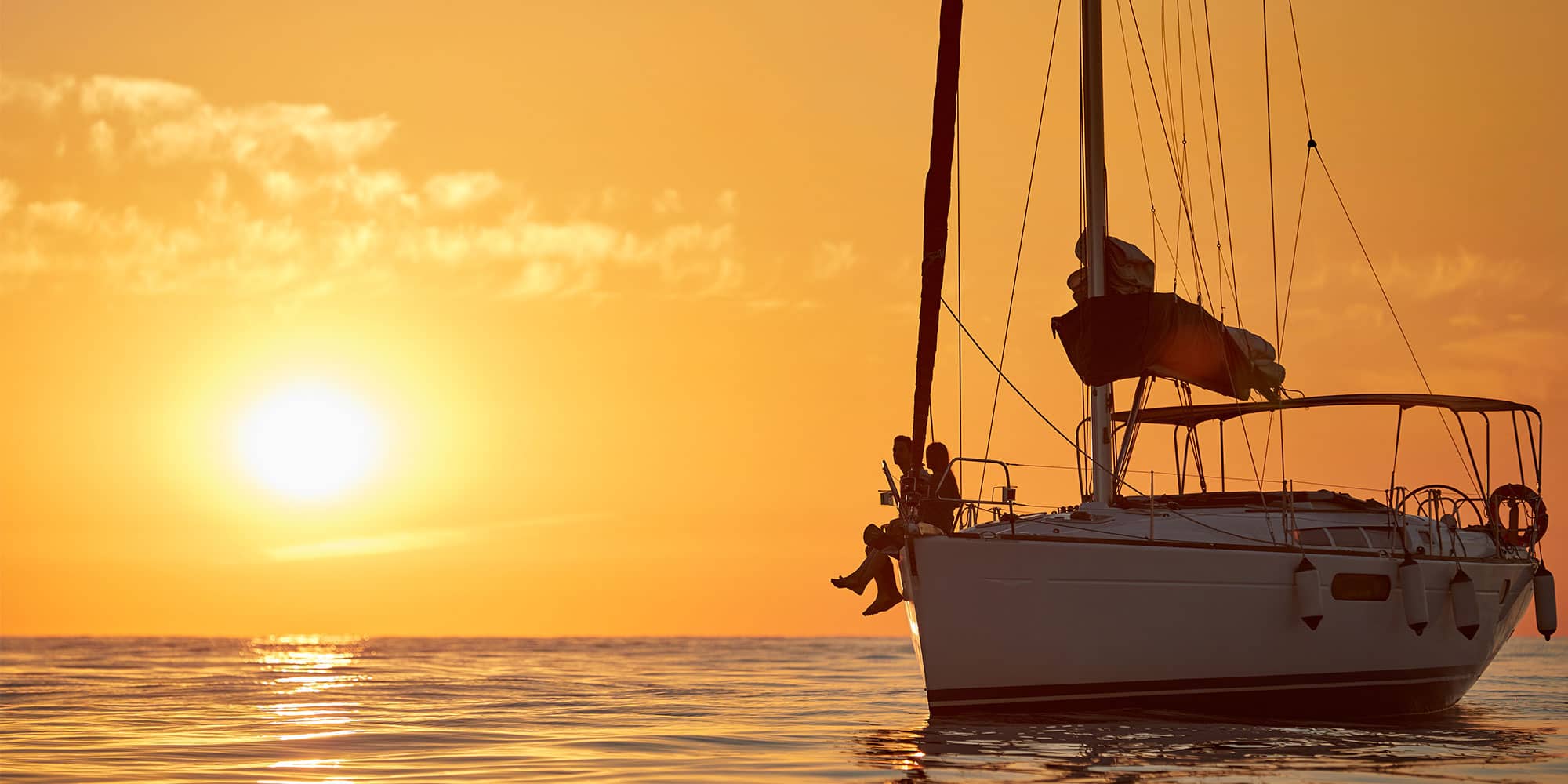
The marine insurance leader for over 45 years.
Find a Markel marine agent and get a free, no-obligation quote today.
If you love your yacht, you’ll love our insurance.
We’ve been the yacht insurance leader for over 45 years because we provide coverages that fit your yacht and your lifestyle. Markel yacht insurance can offer distinct advantages in coverage features, options, knowledge and experience.
Why do you need yacht insurance?
Whether you own a yacht or a houseboat, we understand it’s not a typical boat and shouldn’t be covered by a typical boat insurance policy. That’s where we come in—each Markel yacht insurance policy can be customized to fit your yacht, your needs, your budget and your style.
Still not sure?
Here’s a few of the potential advantages to insuring your yacht with us:.
More complete coverage than any other carrier at no additional cost.
Experienced yacht underwriters and marine claims specialists who provide prompt, responsive service.
Discounts and cost-effective coverage options to save you money.
Flexible payment options.
Save money by customizing your yacht insurance
Actual cash value coverage (ACV) Reduce your coverage to ACV, which factors in depreciation of your yacht should you have to file a claim.
Lay-up option We’ll discount your yacht insurance premium during the winter months when your yacht is not in use.
Higher deductibles If you can manage minor repairs to your boat on your own, selecting a higher deductible will reduce your premium.
Windstorm exclusion Live in an area that isn’t at risk for a hurricane? You may consider removing windstorm coverage from your policy.
Liability only Coverage in case you damage another yacht and/or person (doesn’t require a survey—even for older boats).
What we offer
We offer coverage for a variety of watercrafts over 26 feet in length, including:.
- Sport fishing boat
Our coverages can include:
- Coverage for your yacht
- Coverage for you
- Optional coverages
Hull and equipment insurance protection including:
- Protect and recover can cover reasonable costs incurred when trying to protect your yacht from further damage after an accident
- Consequential damage for non-wood yachts–normal wear and tear and deterioration is not typically covered under a yacht insurance policy. However, if your yacht suffers damage from fire, explosion, sinking or collision because of one of these conditions, you may be protected
- Ice and freezing damage coverage if you contracted with a commercial marina or repair facility
- Agreed value for total loss
- Deductible waived on most total losses
- No depreciation on most partial losses
- Automatic tender coverage
Windstorm extra expense If there is a named storm, watch or warning, we will share the expense with you to help protect your yacht before the storm makes landfall.
Personal effects coverage For all the “extras” you physically bring onto your yacht. (i.e., smart phone, camera, etc.)
Emergency towing and assistance Coverage for towing expenses if your yacht happens to get stuck in or out of the water, including the delivery of gas, oil and parts.
Rental reimbursement coverage Coverage for when your yacht is being repaired from a covered loss.
Uninsured boater Unfortunately, not all boaters on the water have insurance. This coverage helps protect you and your family members if you are injured in an accident caused by an uninsured boater. Coverage is automatically included if watercraft liability is purchased.
Pollution liability Pollution coverage helps protects you if you are held legally liable due to an oil pollution leak or spill.
Medical payments Coverage for injuries suffered during an accident on your yacht.
Paid crew (Jones Act) Protection for you if you are legally responsible for injuries to a paid captain or crew member while on your yacht.
Protection and indemnity Coverage in the event that you are responsible for injuries to another person, or damage to their boat or property. Wreck removal is included with purchase of hull coverage.
- Boat trailer coverage
- Boat lift and boat house coverage
- Fishing tournament reimbursement for fishing boats
- Fishing equipment protection
- Transit and storage coverage
- Trip coverage
- Trip interruption reimbursement
- Personal liability coverage if you live aboard your yacht
Frequently asked questions about yacht insurance
General questions.
How much coverage do I need? Each boat, person, location and situation is different. There isn't a good way to give a "ballpark" figure for how much coverage you need. It’s best to evaluate your comfortable level of risk when protecting your boat, assets and passengers. Your best option is to call our boat specialists at +1.800.236.2453 to discuss the best coverage for you.
Can I insure my yacht for liability only? Yes, we offer protection and indemnity (liability only) coverage to help protect you in case you are responsible for injuries to another person or damage to another boat or property. Many carriers do not offer liability-only policies for yachts, or if they do, require a survey. However, Markel’s protection and indemnity coverage does not require a survey, so you’re able to do what you love without worries out on the water.
Will my policy cover normal wear and tear of my yacht? Most insurance policies will not cover normal wear and tear of your yacht and the deterioration or the resulting damage. However, if your yacht is damaged from fire, explosion, sinking, collision or stranding, you may be protected under our consequential damage coverage.
Can I use my yacht for chartering? We know that sometimes yacht owners charter their yacht for sightseeing tours or even sport fishing to help offset some of the costs of owning a yacht. Markel offers an optional limited charter coverage for these situations provided the captain of the watercraft has a minimum of 2 years loss-free experience of yachting. Additional restrictions may apply.
I live on my yacht. Am I covered? Markel provides live aboard coverage. Be sure to disclose that you live aboard to your agent.
My yacht is in a corporation's name. Can I still insure it with Markel? Our yacht insurance policy can cover corporately titled boats for both personal use and client entertainment. We do require all corporately titled boats designate a designee of the watercraft. Contact your agent to learn more.
Do I need to insure my yacht in the winter? It may seem that since you don't use your yacht in the winter you don't need to insure it. This is a risky way of looking at insurance and one that we have seen cost far too many people far too much money. Your yacht is at risk for damages at all times of the year, not only when it's on the water. For example, if your yacht is placed in storage for the winter and is damaged, you will not have any assistance in paying for those repairs without an active insurance policy.
Do you cover unique boats? We offer coverage for various kinds of boats that other insurers may shy away from, including: high performance boats, airboats, hovercraft, etc. Not sure if your watercraft will be covered? Give us a call at +1.800.236.2453 to speak with one of our marine insurance specialists.
What kind of fishing equipment is covered? Your rods, reels and tackle are automatically covered under your personal effects coverage up to the limit purchased. If that coverage isn't sufficient, our fishing equipment coverage provides insurance protection at replacement cost. Please contact one of our marine insurance specialists at +1.800.236.2453 to find out more.
Claims questions
How do I file a claim? We understand that no one wants to file a claim. That's why we do everything we can to make the process as painless as possible. You can report your yacht insurance claim by calling our office at +1.800.236.2453 or submit your claim online and we'll take it from there.
How long will it take for my claim to be processed? We are committed to investigating, evaluating and resolving marine insurance claims in a timely manner.
Is there anything I can do to help speed up the claim process? Yes, you can help streamline the claims and settlement process and avoid delays by providing the following information when you file your claim:
- Policy number
- Date, time and location of loss or damage
- Description of loss or damage
- Digital photos (if possible)
- Phone number to reach you
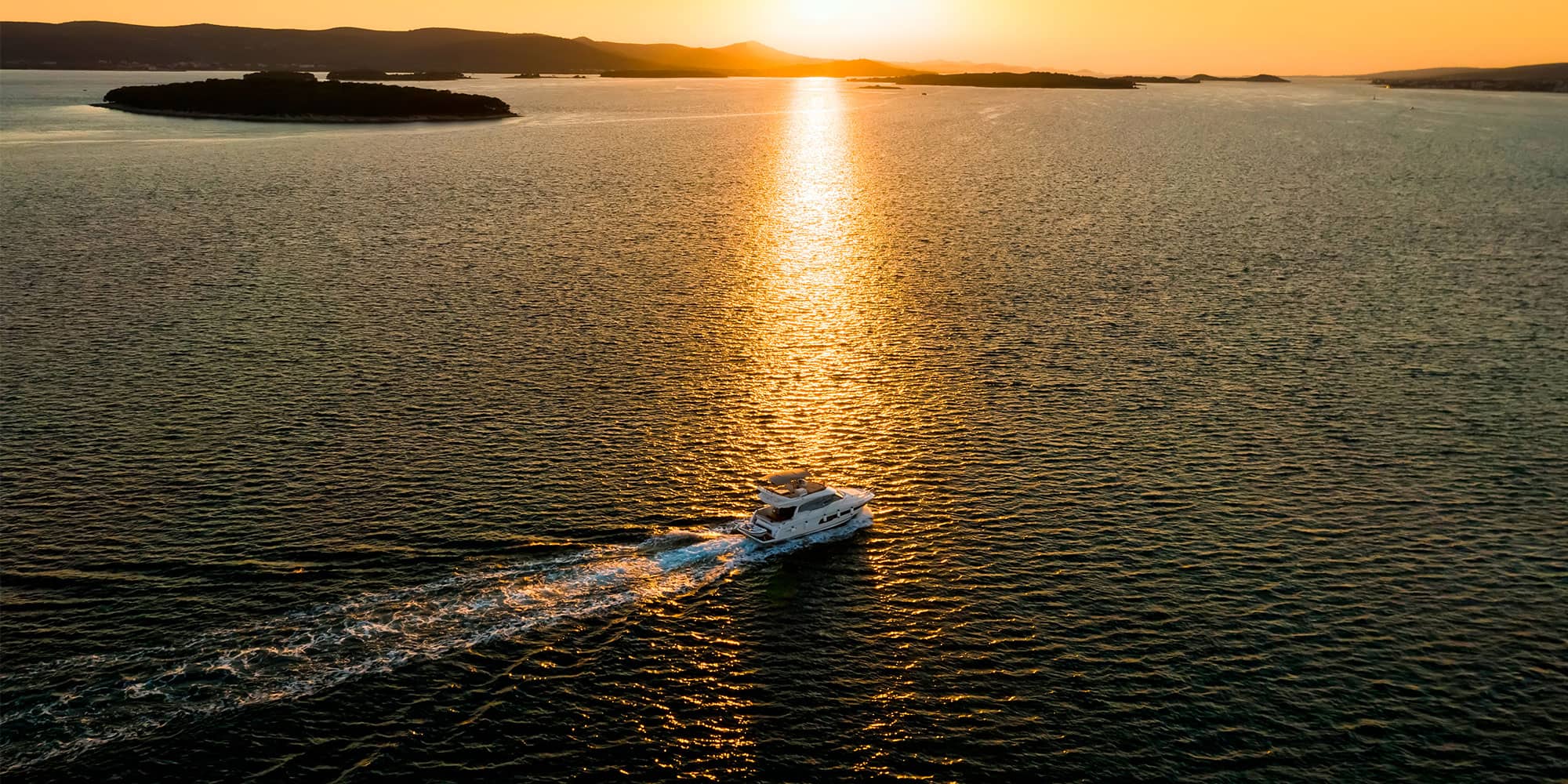
Additional resources
Related articles.
From boat safety tips to breaking down yacht insurance, find the information, advice, and resources you’ll need all in one place.
Warrior Sailing
Markel is a proud supporter of Warrior Sailing, an organization dedicated to healing and strengthening the lives of veterans through sailing. Visit warriorsailing.org to learn about Warrior Sailing and how you can donate to the program so they can continue to help the lives of wounded veterans.
Related products
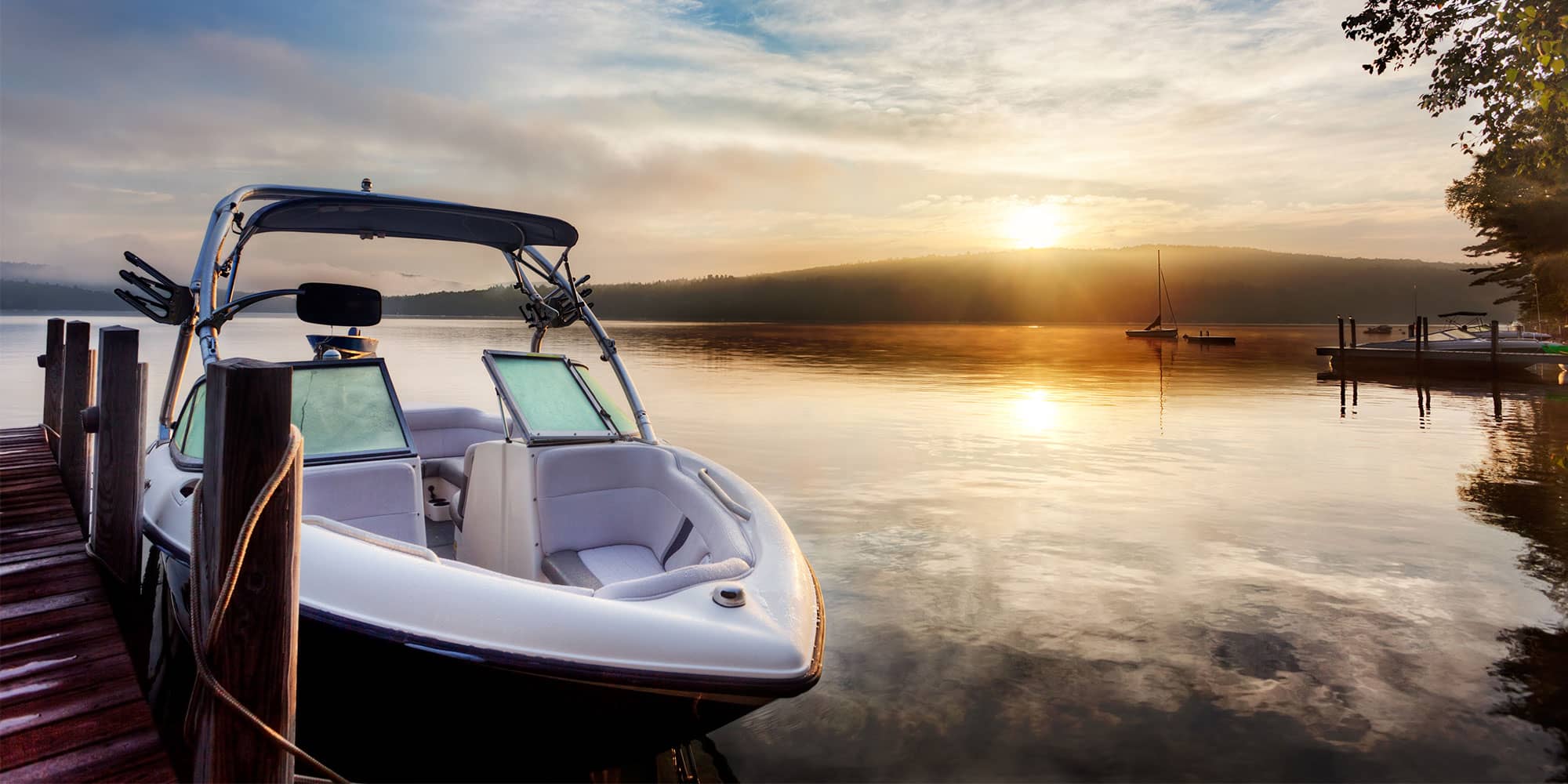
Specialized coverage designed specifically for boats 26 feet or less, such as pontoons, runabouts, fishing boats and more.
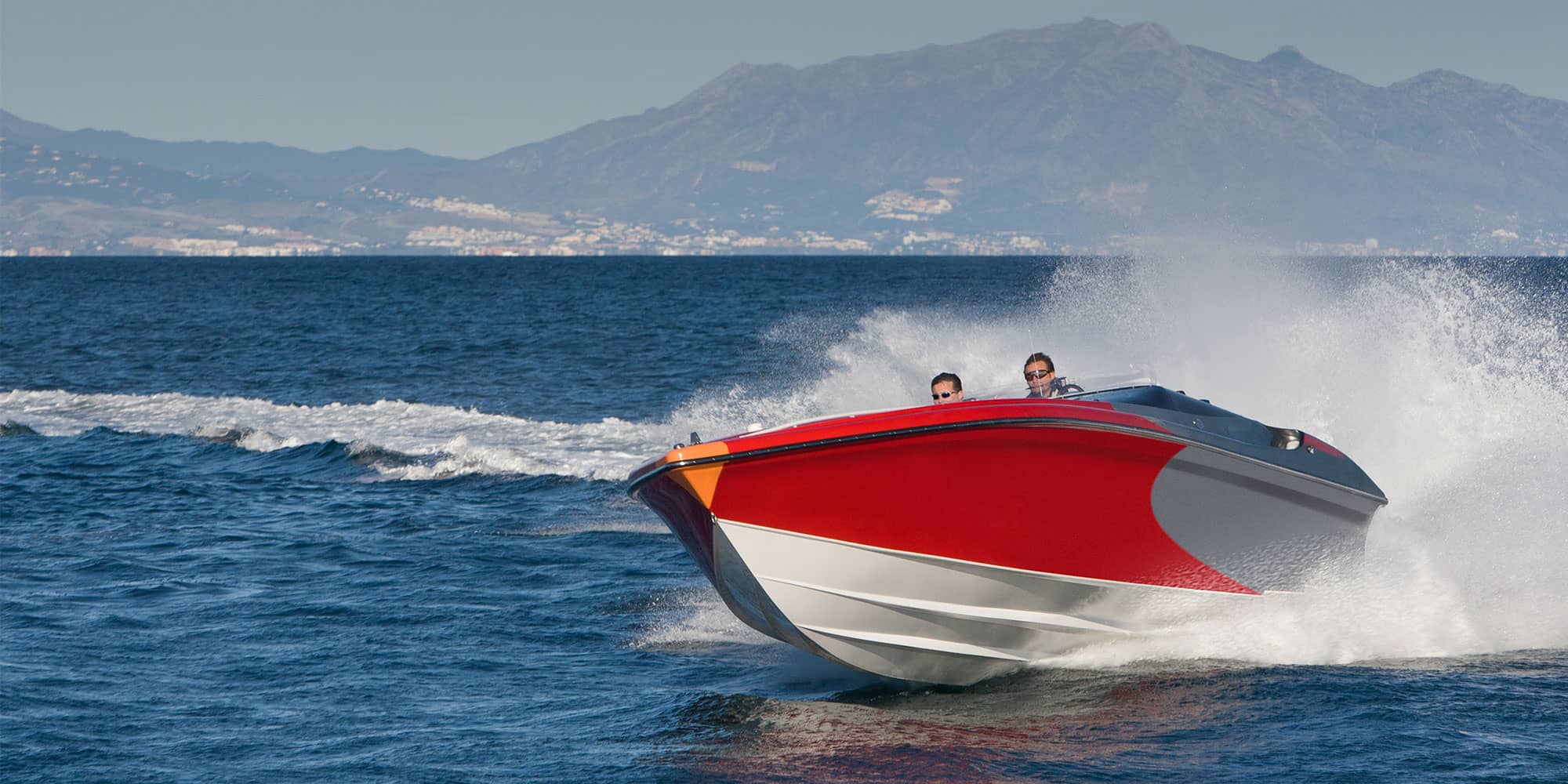
High performance boat
Insure your high performance watercraft with a high performing policy for all your specific needs.
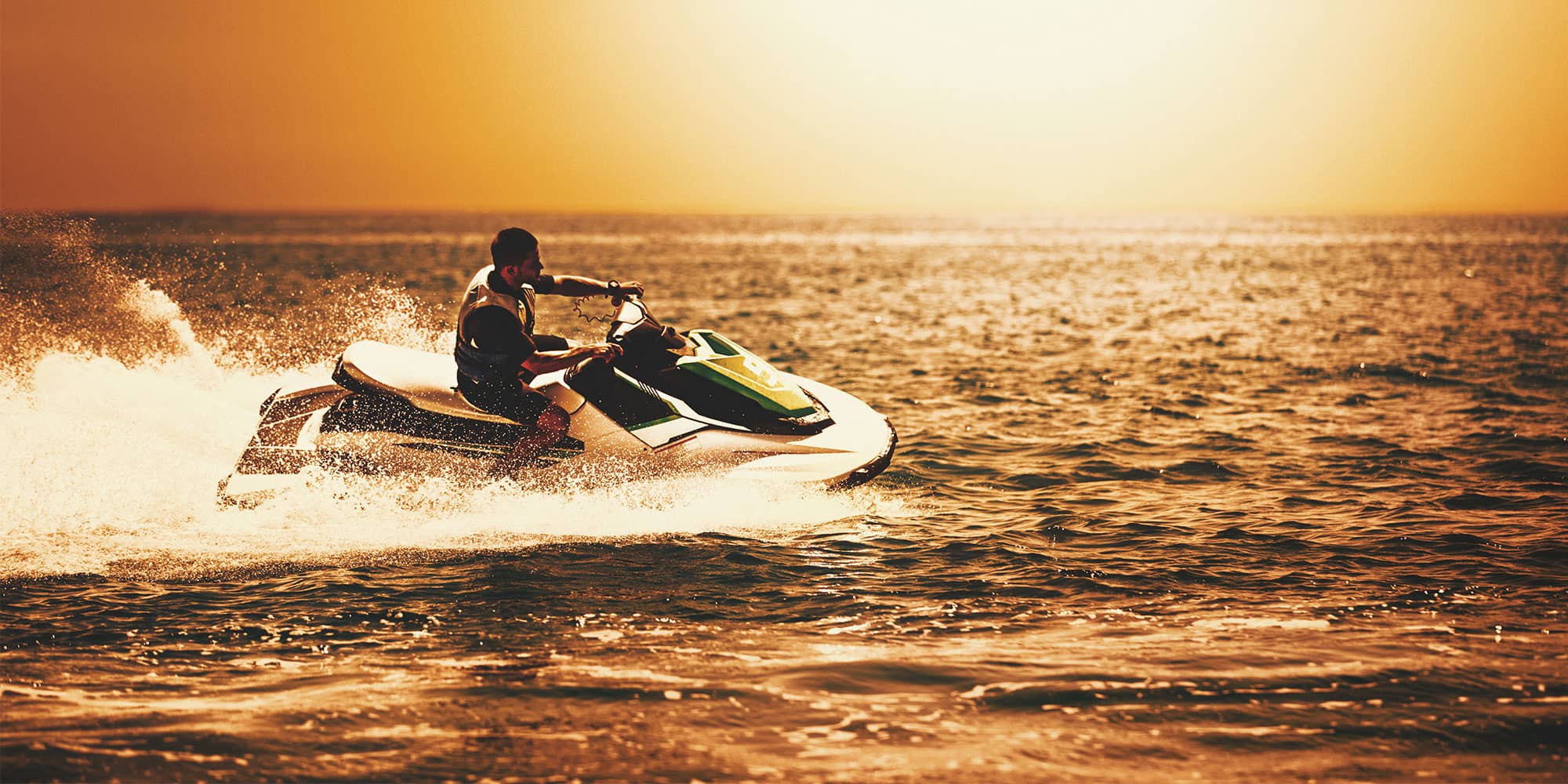
Personal watercraft
Fit your budget and boating style with affordable and customizable coverage for your personal watercraft.
- Advertising
- Subscriptions
Marine Insurance
“what happened to fun our insurance doesn’t cover it”, – charles m. schulz, the complete peanuts, vol. 16: 1981-1982.
If you’re like me, you’re starting the new decade by reflecting on your life situation and making sure everything is on the level. It’s time to square up those bar tabs, renew those car tags, get mundane information straight for taxes, plan that boat haulout, and so forth. January is a dark, cold, rainy month around here anyway, so we might as well get this stuff out of the way to hit the ground running come spring and summer. Your boat insurance is probably on that short, or long, list of tasks somewhere, and to that we say heads up! Recent developments on the Pacific Northwest marine insurance scene are making certain boats—like performance racing sailboats and older yachts—harder to insure. This often comes to a head when owners go to renew their long-standing policy, only to find out that they are either denied outright or require a survey. Or worse, they suffer a big accident on the racecourse and insurance doesn’t cover them.
If this sounds familiar to you, you’re not alone. The market is moving in a direction with fewer Pacific Northwest marine insurance providers willing to take risks with some even getting out of the game entirely. To get a better idea of what the Pacific Northwest marine insurance scene looks like right now and why, we turned to Chris Gibbon, a Pacific Northwest-based marine insurance broker who has worked with Fournier Insurance Solutions for about a year and a half. He worked for Robinson Mauer for 23 years before that broker was bought by AAA Insurance.
Fournier Insurance Solutions is an insurance company based in the South Sound with five locations in western Washington (University Place, Gig Harbor, Chehalis, Montesano, and Bremerton). The company was founded in 1977 by Dick Fournier in Montesano, Washington, and not only covers boat insurance, but personal, business, life, and other specialized industry insurance.
Email: [email protected] / [email protected] Website: fourniersolutions.com Contact: (253) 473-3010
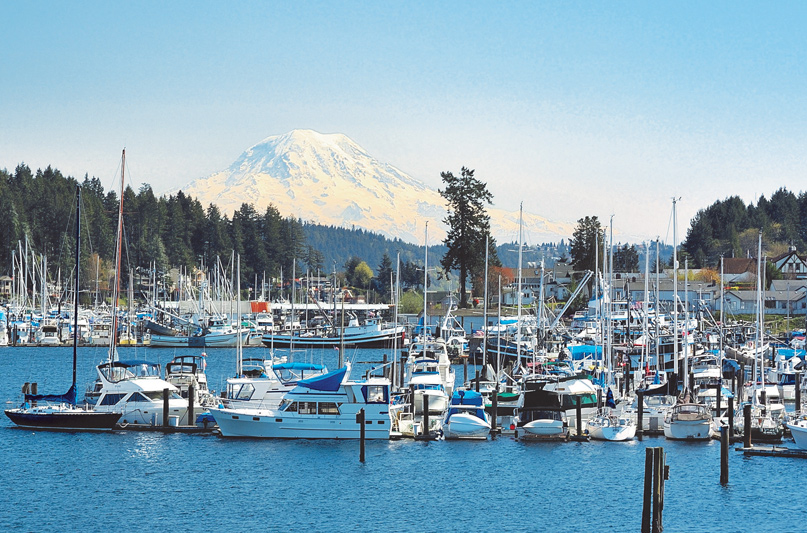
NWY: So, you’ve noticed a change in the Pacific Northwest marine insurance game. What’s going on?
Right now, there are lots of changes in the industry. The markets are getting harder and the rates are going up with the markets becoming few and far between. Lloyds of London is getting the squeeze, not just in the pleasure boat market but also the megayacht market. There’s been lots of losses, and those take their toll.
For those who may not know, Lloyds of London is where the capital comes from. Lloyds backs most providers in the insurance marketplace. In one way, shape, form, or another, all roads pretty much lead back to their doorstep. Not all the companies, of course, but they are the source for a lot of them.
NWY: What should boaters expect?
Boaters should expect some Pacific Northwest marine insurance providers to go out of business. Companies are raising rates and getting tougher on their underwriting criteria. Some of their problems is that their underwriters weren’t diligent enough about knowing exactly what the company was insuring, with the lack of current marine surveys being a part of the problem.
There are still plenty of good markets out there, but you just have to be able to find them. A broker will help you with that.
NWY: Sounds like underwriting, the process of evaluating risk and exposure for an insurance company, is especially important in the marine sector?
Underwriting is an important, not to be overlooked, part of insurance. Insurance companies need to be sure their clients are taking care of their property, and make sure that boats are being maintained. That’s where the survey comes into play. One change we’re seeing is that insurance companies will be asking for surveys every five or six years. Clients don’t always like getting surveys because, frankly, they’re expensive.
If you have a survey within about five years, you should be fine when it comes to renewing a policy and not needing a new survey. Increasingly, some companies want it within three years. But if you’re one of these boat owners who is not getting renewed, and you haven’t had a survey in 10, 12, 15 plus years, you’re going to have to get one. My suggestion to boat owners is to be proactive. If you’re going to do a haul out, you might as well try to time the survey with it.
Chris Gibbon is an insurance broker with Fournier Insurance Solution with a specialty in the Pacific Northwest maritime scene. He studied graphic and industrial design at Kent State in his native Ohio.
An avid sailor and boater, Gibbon was a regular on the local and international racing circuits for years. He’s been an insurance broker in the region for almost 25 years.

NWY: Do you have any tips or resources you recommend for boaters looking for a marine surveyor?
The Society of Accredited Marine Surveyors website (marinesurvey.org) works great. I don’t have any secret tips with selecting a surveyor except to use the one you did before if he was good. The problem is that there isn’t a surplus of marine surveyors available as a lot of the professionals are starting to age out.
NWY: What does this current insurance climate mean for owners of highly specialized vessels, like racing sailboats or older yachts?
Not only are boat owners in a specialized sector of the insurance industry, but within boaters are owners of highly specialized vessels, like high-performance sailboat racers. Unfortunately, insuring higher risk boats like performance racing sailboats is getting more challenging by the day.
These racing sailboats have never been an easy risk for insurance companies. The problem is that when there’s a loss, like a de-masting, it’s sudden and expensive. Also, in such a small specialized market, when one incident happens, it effects the whole market on a local level. The underwriters may look at it and think, ‘What the heck is going on in the Pacific Northwest?’ If we’re having a lot of losses on the racecourse, it affects the bigger picture insurance wise.
NWY: If a boat owner doesn’t get renewed for their policy, are they just screwed, or do they have options?
Not getting renewed is not the end of the world. There are places to go, but they need to discuss it with their broker or call another broker. I’m always available even if it’s just for advice.
The key is to work with a broker who has marine experience. The marine experience is important because you need to understand what the risks are. You want somebody who reads the policies, understands the policies, and who can see if the coverages are right or wrong for the boat in question.
You need the right policy for the right risk. A standard boat policy is great for a little runabout to go around the lake and tow the kids on an inner tube. But a boat policy isn’t a good policy for a guy with a proper yacht with complex and expensive mechanical and electrical systems, etc.
NWY: Are insurance policies for a boat one-size-fits-all?
No, one size does not fit all at the end of the day. Our challenge is to find the right policy for the right boat.
NWY: Do you see insurers who don’t know enough about the marine industry and make mistakes?
Not too often, but instead what I see is that insurance providers just leave the boat insurance game altogether when they realize they are in over their heads. The big thing right now is that there is a huge chunk of the Pacific Northwest marine market that’s just not being renewed because a carrier is getting out of the business of doing business in the Pacific Northwest.
I look at it as an opportunity as a broker, but there are companies that don’t view it as an opportunity. There are still good markets out there. Our office represents 10 or 12 boat and yacht insurance carriers, so there are options. Some people won’t like their options with a rate increase potentially. It’s just a hard market right now.
NWY: Is there an end in sight for this Pacific Northwest marine insurance pinch?
We’re just getting started, unfortunately. With the boats that are not getting renewed, there is an end in sight. That cycle started August 1, 2019 and will go through at least next August and maybe beyond. It could be a two- or three-year cycle.
It’s hard to predict, it just depends on the market. If a provider sees this market as an opportunity again, maybe they get back in and others follow suit. It’s not an opportunity right now if everyone has to be re-underwritten, re-surveyed, etc. It’s a great market for the surveyors. They are the one true winner out of this whole thing. I’ve talked to surveyors who are booked out six, eight weeks.
Norris Comer
Norris Comer is an award-winning writer and the former Managing Editor of Northwest Yachting magazine. He was raised in Portland, Oregon and got his BS in Marine Science at Eckerd College in St. Petersburg, FL where he lived aboard a 1973 Catalina 27 before moving to Washington and an Albin Vega. He has worked as a commercial fisherman, wandered aimlessly around the world, studied oil spills, and was a contestant on the Norwegian reality TV show "Alt for Norge."
Marine Servicenter Named Jeanneau Dealer of the Year
“i’ve got this”, you may also like, row, row, row your boat…, the x factor, shape shifters, the inside track, speakers of the house, wild, wild westport, big things, small packages, state of the art, sunset over the equator, into the blue.
Who is the best provider for towing insurance?
Thanks for the informative article. Take Chris’ advice and schedule a survey during your next haul-out. I’m part of the old boat group (1974) and my long-time insurer has left the PNW market. It seems that for a new client, most insurers require a survey done within the last 3 years.
Leave a Comment Cancel Reply
Save my name, email, and website in this browser for the next time I comment.
Privacy Overview

- Find A School
- Certifications
- North U Sail Trim
- Inside Sailing with Peter Isler
- Docking Made Easy
- Study Quizzes
- Bite-sized Lessons
- Fun Quizzes
- Sailing Challenge
Why is Boat Insurance important?
A comprehensive boat insurance policy should cover:.
American Sailing members must claim their discount via the Sailors Portal . Not a member? Join or renew today or visit Ahoy Insurance to get a quote.
It is also important to remember that boat insurance is often required by your state, your marina, and/or your boat finance company (if applicable). Experts recommend not relying solely on your home insurance policy.
In many cases, your homeowner policy may not even cover liability protection, and damage is typically covered only under $2,000. However, your umbrella policy is a great addition to your marine policy, as it extends liability protection at an affordable rate.
We partnered with the best

The Ahoy! Insurance offering
Get a great insurance quote, fast, a worry-free boating experience, supporting you if something goes wrong, how does the ahoy offering work, get a quote & pay, just in case.

- Learn To Sail
- Mobile Apps
- Online Courses
- Upcoming Courses
- Sailor Resources
- ASA Log Book
- Bite Sized Lessons
- Knots Made Easy
- Catamaran Challenge
- Sailing Vacations
- Sailing Cruises
- Charter Resources
- International Proficiency Certificate
- Find A Charter
- All Articles
- Sailing Tips
- Sailing Terms
- Destinations
- Environmental
- Initiatives
- Instructor Resources
- Become An Instructor
- Become An ASA School
- Member / Instructor Login
- Affiliate Login

Do I Need Insurance for my Sailboat?

Last Updated by
Daniel Wade
January 26, 2024
Do you need to insure your sailboat? While it isn’t always a legal requirement, it’s still the smart thing to do. Chances are it won’t cost much, but it can prevent severe financial damage when an accident occurs. Even if you’re the best sailor in the world, you still have to worry about what happens when somebody else causes an accident.
Unpredictable weather can cause enormous damage to your boat, and most of the time there’s nothing you can do about it. Luckily, sailboat insurance isn’t particularly expensive for most boats, and the small added expense can bring peace of mind while on the water.
Table of contents
What is the law about sailboat insurance?
There’s no federal law in the United States that mandates sailboat insurance nationwide. Unlike car insurance, most states don’t require sailboat insurance either. As of 2019, there are only two states that require coverage for boats: Arkansas and Utah. Oddly enough, Utah has few navigable waterways, and Arkansas is landlocked too (with the exception of the Mississippi and Arkansas rivers), and rivers aren’t the best place for sailing vessels anyway. Chances are you won’t own a full-size sailboat in those two states, but if you do, you’ll be legally obligated to insure it.
In the rest of the country, there’s no requirement to insure your boat. It may seem like an excellent opportunity to save a few bucks, but the legal consequences after an accident can be severe. In most cases, you will be held accountable for damage caused by your boat, even if it was an accident. Boat repair can be extraordinarily expensive, and it doesn’t take much to cause a lot of damage. That’s not to say that you will get in an accident; many experienced sailors go their whole lives without one. The point is that you’ll want to be protected if the unexpected occurs, regardless of how and whose fault it is.
Insurance isn’t just for private property damage. In every state, the environment is protected by federal law. Remember, if your boat sinks in a protected location, you’ll be responsible for preventing (or in some cases repairing) the environmental damage caused. Additionally, fuel and chemical spills are sometimes your responsibility to manage. If you run aground or get stuck in a heavily-trafficked area, somebody is going to have to pull you out. Towing services are expensive, and you’ll have to pay for whoever comes to the rescue. It’s even worse if you get into a collision with commercial vessels. An insurance policy can cover emergency transport and environmental cleanup costs. If a careless speedboat ignores a ‘no wake’ sign, you could be pushed against your will into an object or aground. Collisions with docks, buoys, or other marine infrastructure can cost thousands to repair, and it may not be your fault.
How Sailboat Insurance Can Help You
The boat insurance world is full of incredible claims and stories of accidents. All sorts of ridiculous things can happen to a boat, and sailboat insurance can financially rescue you when accidents (or mother nature) strike. The purpose of this section is not to scare you, but instead highlight the importance of insuring your boat so you can enjoy it as long as possible.
On Grand Lake in Oklahoma, captains stored their vessels under covered slips to shield them from the sun and weather. When a blizzard struck in 2011, the roof above the slips collapsed onto the boats below. Collapses are surprisingly frequent at covered marinas, especially after freak snowstorms. Those who had insurance got their boats repaired, but some couldn’t afford to fix the damage resulting in the loss of their prized vessels.
Speaking of weather, everybody with a boat in areas frequented by hurricanes should always buy insurance. Tide surges that occur during severe tropical storms can inconveniently relocate your sailboat in a parking lot or miles away up a flooded road. If you store your boat on land, high winds can knock it off its stands and cause extensive damage. During hurricane Harvey and Irma, a shocking 63,000 recreational vessels were damaged or destroyed! BoatUS estimated the total damage cost to boats from those storms was $655,000,000 —that comes out to over $10,000 per person . Severe storms can (and often do) strike a significant financial blow to the sailing community, but a sensible insurance policy can ensure you’ll be back on the water in no time.
Nature strikes boaters in a variety of ways, as the crew of a sailboat in California recently learned the hard way while on an offshore excursion. On their way back from Hawaii during the Trans-Pac race, the sailors found themselves in between a mother whale and her calf. In a moment of protective rage, the mother whale punched a massive hole in the side of the vessel, causing it to take on water. The crew were rescued, but their prized sailboat sank to the bottom of the Pacific. Luckily, the owners had insurance, and the company covered their extraordinary claim.
Much of the time, sailboat damage occurs before the boat reaches the water. Boats on trailers are sometimes hit by cars or other equipment, and wind gusts can blow over even the most secure land-based boats. In one case, a series of unfortunate circumstances at a marina caused a forklift operator to drop a boat onto the pavement, resulting in extensive damage. A boat is at risk of damage any time it’s out of the water. When your sailboat needs maintenance, it’ll need to be towed or lifted out of the water with a crane, and the vessel can fall and be damaged.
How Much does Sailboat Insurance Cost?
If you think sailboat insurance will cost a fortune, you’ll be surprised by the reality. Even though a sailboat can be both a home and a vehicle, it’s likely going to cost a fraction of your other insurance policies. It’ll probably only cost a few hundred dollars per year to insure an average-sized (30-foot) sailboat. And while size plays a part, these insurance policies are usually calculated based on value. For example, a sailboat worth $20,000 costs an average of $300 per year to insure. Individual factors will have an effect on your policy cost, so you’ll need to gather all the relevant details to get an accurate quote. Be sure to note your sailboat’s:
- Modifications
- Location of registration
The same companies that offer auto insurance usually deal with boats as well. As with any insurance policy, it’s essential to shop around for the best deal, as one company may offer more coverage at a lower expense for your particular boat. Getting a quote is easy, and you can do it online.
However, some boats require a different type of insurance company. Large (over 50-feet), extremely expensive, and vintage boats sometimes aren’t covered by general-purpose indemnity companies, so you’ll need to find a dedicated boat insurance company. Many such organizations exist, and their policies are catered towards people with unique boats. If you own an unusually large, antique, or expensive boat, you of all people should absolutely consider an insurance policy. Unique boats (while generally more costly to insure) are especially important to cover because of their novel attributes.
The best place to start is to checkout this article we wrote about the best insurance for sailboats .
Even though insurance isn’t mandatory for boats in most places, it can add priceless value to your sailing experience. Going out on the water with peace of mind should be worth much more than the couple hundred dollars spent to insure a boat. Policies from the bare minimum to full coverage are available, and you can choose whichever one fits your needs and budget. You can cover a sailboat for as little as $100 per year and get the most out of your recreational craft without worrying about an accident and financial distress.
Accidents happen, and they range from devastating and unfortunate to comical in some cases. Regardless of how often you use your sailboat, consider insuring it for the sake of the unexpected.
Related Articles
I've personally had thousands of questions about sailing and sailboats over the years. As I learn and experience sailing, and the community, I share the answers that work and make sense to me, here on Life of Sailing.
by this author
Most Recent

What Does "Sailing By The Lee" Mean?
October 3, 2023

The Best Sailing Schools And Programs: Reviews & Ratings
September 26, 2023
Important Legal Info
Lifeofsailing.com is a participant in the Amazon Services LLC Associates Program, an affiliate advertising program designed to provide a means for sites to earn advertising fees by advertising and linking to Amazon. This site also participates in other affiliate programs and is compensated for referring traffic and business to these companies.
Similar Posts

How To Choose The Right Sailing Instructor
August 16, 2023

Cost To Sail Around The World
May 16, 2023

Small Sailboat Sizes: A Complete Guide
October 30, 2022
Popular Posts

Best Liveaboard Catamaran Sailboats
December 28, 2023

Can a Novice Sail Around the World?
Elizabeth O'Malley
June 15, 2022

4 Best Electric Outboard Motors

How Long Did It Take The Vikings To Sail To England?

10 Best Sailboat Brands (And Why)
December 20, 2023

7 Best Places To Liveaboard A Sailboat
Get the best sailing content.
Top Rated Posts
Lifeofsailing.com is a participant in the Amazon Services LLC Associates Program, an affiliate advertising program designed to provide a means for sites to earn advertising fees by advertising and linking to Amazon. This site also participates in other affiliate programs and is compensated for referring traffic and business to these companies. (866) 342-SAIL
© 2024 Life of Sailing Email: [email protected] Address: 11816 Inwood Rd #3024 Dallas, TX 75244 Disclaimer Privacy Policy

For more information or to get a quote contact us today
[dtblogpostsidebarauthor].
email: [dtBlogPostSidebarAuthorEmail] [dtBlogPostSidebarAuthorDesc]
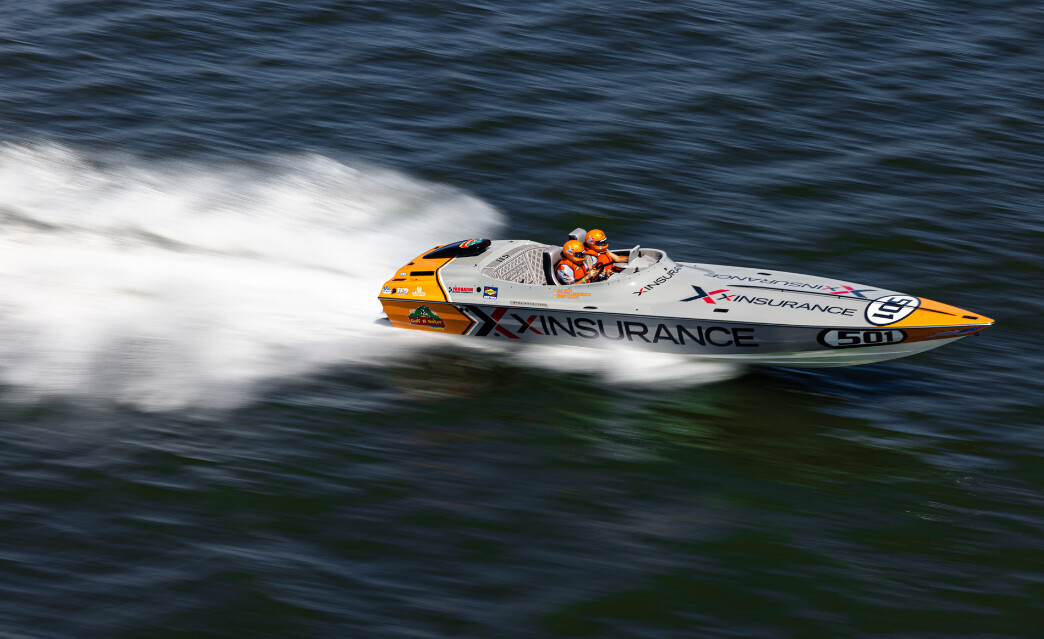
Liability Insurance for Watercraft Racing
Watercraft refers to vehicles used in and on water. The term includes but is by no means limited to boats, ships, and hovercraft. When it comes to watercraft racing, this could include everything from the Oxford and Cambridge boat race to personal watercraft such as jet skis. When combining racing with watercraft, risk can be high. Accidents do occur. This makes insurance for watercraft racing essential for individuals and businesses operating in this area.
While watercraft like jet skis are frequently used for leisure, adding the racing element takes things up a notch in terms of risk. The combination of rigorously designed vehicles, competitive sportspeople, and water is exciting, but sometimes leads to tragic accidents. For this reason, best safety practices are critical and insurance for watercraft racing is a must.
Risks of Watercraft Racing
In addition to the risk of drowning, injuries due to collisions, such as broken bones, are also possible. And falling off a jet ski can land the rider in the path of a high-pressure jet of water that can force water into the rider’s orifices, causing mutilating injuries or even death . A lawsuit against Kawasaki for such an injury led to the award of $1.5 million in damages.
Daniel O’Keefe, A sailboat captain who was struck in the chest by a boat and landed in Lake Michigan unconscious sued the other captain , Todd Abram of Minnesota, for $1 million. His injuries included broken ribs and a heart contusion. Christopher Cooke, the defendant’s attorney, said that competitors accept inherent risks, but that certain things are unavoidable in the heat of competition.
And it’s imperative not to overlook the risk to equipment and property. Such risks include property damage to watercraft or docks, accidents while towing, and theft. Watercraft racing comes with a significant risk of injury on the water and potential damage following a collision. The legal costs associated can mount quickly, making watercraft racing insurance a wise investment for any individual or business in this industry.
Insurance for Watercraft Racing and How XINSURANCE Can Help
With such potential for spiraling lawsuits, insurance for watercraft racing can provide some much-needed peace of mind so that organizers and competitors can focus on what they do best. XINSURANCE can help provide a solution for this industry in which it can be challenging to acquire coverage.
If you have been denied coverage due to past experiences, your insurance has been canceled or will not be renewed, or you are concerned about gaps or exclusions in your coverage, give XINSURANCE a call to ensure that you are protected.
XINSURANCE is an insurance partner providing specialty liability insurance solutions, powered by Evolution Insurance Brokers, LC (“EIB”), an excess and surplus lines insurance brokerage, with an all-in-one approach. We can offer solutions despite a claims history or when an individual or business has been denied.
Contact XINSURANCE for a Quote for Insurance for Watercraft Racing
For a quote for watercraft racing insurance, don’t hesitate to get in touch. Our website has more on our extensive product line and a facility to request a quote or send us a message. You can also reach us using the following details:
- Phone: 877.585.2853
- Email: [email protected]
- Events calendar
Make the most of our skill in providing specialty liability insurance solutions. Our team is looking forward to learning more about your circumstances and your needs. Contact XINSURANCE today for more information.

Rick J. Lindsey hails from Salt Lake City, Utah. He began working in the mailroom of his father’s Salt Lake City insurance firm, getting his introduction to the business that became his lifelong career. Rick J. Lindsey quickly rose through the ranks while working in nearly every imaginable insurance industry job. As an entrepreneur, specialty lines underwriter, claims specialist, risk manager, and a licensed surplus lines broker, Rick J. Lindsey is highly skilled in all levels of leadership and execution. As he progressed on his career path, Rick J. Lindsey discovered an urgent need for insurers willing to write policies for high-risk individuals and businesses. He was frequently frustrated that he could not provide the liability protection these entities desperately needed to safeguard their assets. He also formed the belief that insurance companies acted too quickly to settle frivolous claims. Rick J. Lindsey decided to try a different approach. He started an insurance company and became the newly formed entity’s CEO. This opportunity has enabled Rick J. Lindsey to fill a void in the market and provide a valuable service to businesses, individuals, and insurance agents who write high-risk business. XINSURANCE also specializes in helping individuals and businesses who live a lifestyle or participate in activities that make them difficult for traditional carriers to insure. If you’ve been denied, non-renewed, or canceled coverage, don’t give up quite yet. Chances are XINSURANCE can help.
Privacy Overview
- Yachting World
- Digital Edition

Bluewater cruising insurance – what you need to know
- April 13, 2022
Janneke Kuysters looks at bluewater cruising insurance and explains what you need to know and why it's become increasingly difficult to insure your yacht for long distance cruising

There’s no getting around the fact it has become a lot harder to get boat insurance, particularly bluewater cruising insurance. However, there are still ways to secure good coverage – you just need to know what makes insurers tick.
If you want to ruin any cruising sailors’ potluck party on a tropical beach, just drop in a question about boat insurance. Many boat owners have stories to tell. Just about every aspect of the process has become more complicated for bluewater cruising insurance, it takes a bigger chunk out of the cruising budget every year and the rising deductibles make it more and more tempting to go uninsured. So, what is going on in the market and how do you get proper insurance to match your cruising plans?
How bluewater cruising insurance works
First, let’s look at who you are dealing with when you try to get your yacht insured for a trip to the Med, the Caribbean or a circumnavigation.
The insurance company covers your yacht: they write the cheque when there are damages to it or when you’ve caused damage. All this depends on the conditions that you agreed to when taking the policy, but in general, you don’t deal with the insurance company directly when you try to get insurance for a bluewater itinerary. Unlike car insurance, boat insurance is a very specific product and it requires a tailor made approach. Most likely you’ll do business with a broker or an underwriting agent.

Uninsured yacht owners could face enormous salvage, repair and environmental damage costs if the worst should happen. Photo: Ben Welsh Premium/Alamy
The broker considers you, your boat and your plans and presents this ‘package’ to several insurance companies. A single insurance company may want to insure you, but it could also be a syndicate of insurers: each insurer accepting a certain percentage of the risk presented by your package.
There are different kinds of brokers; the difference lies in the amount of work they take off the hands of the insurance companies. If the broker is just helping you to get cover for your beautiful blue water itinerary, you’ll get a policy with the header of the insurance company. If the broker does a lot more work, for instance manning phone lines for 24/7 assistance and handling of claims, you may find their company name at the top of your policy. Brokers that take the most work off the hands of the insurers are called managing general agents (MGAs).
What has changed?
Why has it become more complicated to get yacht insurance for blue water voyages? Mike Wimbridge, managing director of Pantaenius UK, explains: “Yacht insurance for offshore itineraries has always been a tailor made market. And we see that, in recent years, there has been less appetite from the insurance companies when it comes to yacht insurance in general. For coastal cruising in UK waters, things are still fairly easy to insure. But for more bespoke risks like insuring a bluewater cruise, we see that the market is nervous.”
There are several reasons behind this change, Wimbridge says. “Up until 2017 this was a highly competitive market, so prices were as low as possible. It then became untenable for many insurers, especially when a few big windstorms tore through areas where lots of yachts were stored.
“Insurance companies and their reinsurance companies pulled out of the market, leaving a few behind who needed to safeguard their financial situation. So the premiums and deductibles rose. Things are stabilising now, but we still see slight increases annually.”
There are other factors at play. The effects of climate change mean extreme weather events happen more often.

Sailing off the beaten track can be challenging to insure. Photo: Janneke Kuysters
The typical consumer profile has also changed. In the past, yacht owners usually set off on passage armed with sextants, paper charts and a wealth of experience. Nowadays it has become a lot easier to get started – thanks to everything from computer-based navigation systems to powered sail handling – so owners can set off on a bluewater cruise with less experience.
At the same time, boats have become larger and potential claims more expensive: a single lightning strike can destroy tens of thousands of pounds worth of electronics, so it’s perhaps understandable insurers can be nervous to write bespoke policies.
However, there are signs that the market is rebalancing. Ric De Cristofano, director of underwriting with Topsail Insurance, says: “The good news is that the insurance market is cyclical: it will bounce back. I think we have the worst time behind us and we’ll see that insurers become more open to write policies for bluewater cruising yachts.”
How to get bluewater cruising insurance
If you are looking for insurance for a bluewater itinerary, Wimbridge says, “Getting a quote is getting harder and harder. You have to ‘pitch’ yourself, your boat and your plans to the insurer. The broker can help you to do this or you can select a carrier that has staff on hand who are experienced in this area. Things like your sailing CV, diplomas and those of your crew, previous long passages that you have successfully undertaken, and technical or managerial skills that will benefit your sailing, are very important to mention.
“When it comes to the boat: the more seaworthy, the better. There is no real threshold when it comes to boat value, but a well found yacht that is suitable for offshore cruising is paramount to get insurance.”
“We have added a maintenance log to our ‘pitch’ to get insurance,” say American cruisers Jason and Nicky Wynn (see gonewiththewynns.com). “This has added to the success of securing insurance for our boat.” Keep receipts and take photographs as proof of upgrades and repairs, and record a log of routine maintenance.
“The third element in your ‘pitch’ is your itinerary,” continues Wimbridge. “The Atlantic and Pacific are well-cruised areas where insurers can assess the risk they are writing. But if you’re heading around Cape Horn or further afield in the Indian Ocean, premiums will rise. So with your choice of itinerary you can influence the height of your premium and insurance conditions.”

Hurricane damaged yacht. Photo: Pantaenius
In general, insurers are not keen to cover your yacht if you sail in areas with a cyclone/hurricane risk. They have predefined areas and dates which are important to adhere to if you want to stay insured. You will also have a very hard time finding insurance to sail in areas with political instability, war or threats of terrorism. War Risk zones are internationally acknowledged areas where even large commercial ships pay breathtaking insurance premiums.
De Cristofano adds: “Start looking for an insurer at least six months before you plan to leave. Have a chat with your broker to see if they will be able to find insurers that will cover your itinerary. Give yourself ample time to put your ‘pitch’ together and to discuss possible alternatives with your insurer that will lead to a policy that fits your budget.
“It pays to negotiate about the deductible: if you are willing to accept a higher deductible, this may make a significant difference in the premium you will be paying, because it signals to the insurer that you have confidence in your yacht and your skills to maintain it properly.”
However, Wimbridge warns: “Price is not all; think of insurance as a partnership with the insurer. The cheapest policy may not do what you need it to do when you are in trouble on the other side of the planet. You need an insurer who has the knowledge and the capacity to get help to you where you are: spare parts, technical assistance or even worst case, salvage. A lot of the cheaper insurance options will require hiring a third party provider locally, which may present all sorts of cultural and language barriers. So look at the quality of the policy.”
Real world solutions
Bill Garlick is a well known name in the cruising community: many boat owners who have sailed to the other side of the world and run into trouble with their insurance get help from Bill at The Marina Shop in Opua, New Zealand.
“The marine insurance market had a monumental dislocation at the end of 2018 when many Lloyds pleasure craft syndicates closed their books,” Garlick explains. “The lost capacity created a worldwide shortage of marine insurance for pleasure craft. Cover was difficult to find and premiums started rising. Around 95% of our clients were insured with Lloyds at the end of 2018 and those now with Lloyds can be counted on one hand. A number of insurers stepped in to fill the abyss which meant brokers and clients had to deal with new policy wordings and cruising parameters. By the end of 2019 most clients were placed with new insurers.

Keeping a log of regular maintenance can be helpful. Photo: Janneke Kuysters
“A consequence of the contracting market is that marine insurers have tighter criteria and marine insurance is more difficult to secure. Older (30 years-plus), smaller (under 40ft) and low value boats (less than US$100,000) are difficult and sometimes impossible to insure. Standing rigging must be no more than 10 years old (a rig inspection and report is no longer acceptable), surveys are generally required when an insurer takes on a new risk unless the vessel is a relatively new factory production model.”
He adds: “Registration is now the key factor in securing marine insurance. Many insurers are not registered in all countries/jurisdictions so they can only offer cover to certain flags. Choosing a flag is now the decision that determines which – if any – insurers can offer terms.”
Claudia Masson, CEO of the specialised German yacht insurance broker Preuss, says Brexit has also had an impact on European brokers: “Since Brexit, it is no longer possible for us to insure a UK registered yacht with a UK owner. We’ve had to cancel all the policies of our UK clients; this has limited the amount of alternatives there are for UK boat owners.”
“Lightning, windstorm and saltwater damage to electronics and electrical systems are problematic,” adds Garlick. “Many marine insurers simply refuse to offer cover for these risks and others mitigate their exposure by offering high excesses/deductibles.”
Go uninsured?
Every year a number of cruising yacht owners decide to sail uninsured. There are several reasons for this, but usually it’s because of budget constraints or simply because they cannot find an insurer.
But there are considerable risks to going uninsured. First of all, some countries will not let you enter or leave without at least liability insurance – Panama being one example. The same applies to most harbours or marinas.
But the most important thing to consider when you sail uninsured is whether you can afford to lose your boat and equipment. Would being uninsured likely change your behaviour – would it make you less likely to issue a Mayday? In the case that you hit a reef, could you finance the cost of salvage and repairing environmental damage? Or the liability if you accidentally hit another yacht or a swimmer in the water?
“If you are considering sailing uninsured, there are insurers in the UK that will accept yachts for just the liability insurance,” says Ric De Cristofano of Topsail Insurance.
If you enjoyed this….
Yachting World is the world’s leading magazine for bluewater cruisers and offshore sailors. Every month we have inspirational adventures and practical features to help you realise your sailing dreams. Build your knowledge with a subscription delivered to your door. See our latest offers and save at least 30% off the cover price.
After sailing around the world, Cole Brauer says she's more grounded than ever

Cole Brauer's adventure put her in the history books and in the heart of the most isolated and dangerous places on Earth. Not to mention Instagram .
The southern oceans of the Atlantic and Pacific that Brauer endured alone in her 30,000-mile sailboat voyage brought her face-to-face with bigger waves and storms than most people will ever see."It's like going to Mars and hoping that you can breathe," says Brauer, who became the first American woman this month to sail solo nonstop around the globe . "It's not made for humans."
She's now a seafaring celebrity who has been deluged with more questions about aquatic travel and surviving the dangers of the deep than Jules Verne and Jacques Cousteau. That's because Brauer's social media followers now total half a million, and many are asking about her journey and how she did it.
"With this newfound fame, I want to keep my feet on the ground," says the 29-year-old from Long Island. She's looking to chart a new course in the sailing industry, which has historically been a bastion of elitism and exclusivity, she said.
Brauer used Starlink − the low-orbit satellite network owned by tech billionaire Elon Musk − to get an internet signal on her voyage so that she could talk to her team, FaceTime with her mother and post videos to Instagram from her 40-foot Class40 sailboat, First Light.
She departed from A Coruña, Spain, on Oct. 29 and was at sea for 130 days. She competed against 15 male sailors, eight of whom had to drop out. Sailors set off at staggered times, depending on the speed of their boat. Brauer finished second in the race, behind France's Phillipe Delamare.
"Cole put in a tremendous effort to achieve a tremendous result," said Marco Nannini, who organized the Global Solo Challenge race.
Treacherous conditions in the Southern Hemisphere
Because the race took Brauer around the world, she had to endure scorching temperatures near the equator and near-freezing cold in the globe's southern oceans − where waters are more choppy and dangerous to sail, she said.
"I always had respect for the ocean, but this was an absolute different level," Brauer said. "It's beautiful. It's uninhabited. It's just untouched by humans."
Stronger winds and underwater currents in the Indian, South Atlantic and Pacific oceans often react to form bigger waves and "crazy storms," Brauer said, making those areas "some of the most dangerous places to be on the planet."
Unlike the part of the Atlantic Ocean stretching between North America and Europe, the southern oceans have a lot less traffic, Brauer said. During the two months she sailed there, she said, she saw only one other boat. The weather was colder and grayer, and the nights were much shorter.
The scariest moment came about two weeks from the end of race, when over just a couple days a fellow competitor had to abandon his ship because it started to sink and another had to do the same after his boat lost its mast.
It caused Brauer to feel paranoid, she said, even imagining noises coming from her own boat, which was also going through normal wear and tear.
"I just felt like, 'Oh my gosh, what's going to break next?'" she said. "Is the boat going to break in half?"
Alone in the middle of the ocean, Brauer felt homesickness, then zen
Brauer made it all the way around the world the same way any sailor goes from one point to another: staying out of direct wind and tacking from one direction to the next until she finally got to the finish line.
"You want to go straight, but you can't," she said. "You can't sail directly into the breeze; you have to tack back and forth at a 45-degree angle. I went around the world tacking, and jibing, and eventually you make it there − but there's a lot of twists and turns."
Brauer also had to constantly check the weather and change sails while also maintaining the boat.
"Everything has the possibility of breaking," Brauer said.
Brauer slept on a pile of bedding on the boat's floor for two to four hours at a time. She boiled water and used a warm wash cloth to bathe, she said. She packed 160 days' worth of freeze-dried food, including a peaches and cream oats mix that became her favorite.
Despite the technical challenges of sailing around the world, homesickness was by far the biggest challenge, she said. In Spain, before she set off on the race, nightly family-style dinners with teammates and group outings in A Coruña created intense personal bonds that she longed for on the ocean.
"All of a sudden I had a family of like 12, and you get very used to being surrounded by all these boisterous and loud people," she said.
But then, something clicked one evening when Brauer was in the boat's bow watching the colors of the sunset bleed through a massive sail.
"My body and my mind finally got used to being out there and and knowing that this was like where I was supposed to be," she said.
Brauer said she saw dolphins, sea turtles, plenty of fish and even a whale as big as her boat.
"It's just so magical," she said.
Pitch-black night skies were another highlight, Brauer said, especially when she was sailing through hot areas and the darkness brought cooler temperatures.
Brauer documented every moment on Instagram
Brauer shared details of her journey with tens of thousands of followers on Instagram. At the start of the race, her Instagram account had 10,000 followers and now boasts nearly 500,000.
Creating and posting more than 150 original videos from the boat allowed Brauer to stay connected with other people even when she was in the middle of the ocean.
Many of Brauer's videos showed her raw emotions up close, like in one post from early in the race when she angrily vents about the moment she realized she'd have to fix several boat parts on her own.
"Right now I've been feeling just broken," she says in the video.
That vulnerability is what's allowing Brauer to chart a new course in the sailing industry, she said.
"I've shown a good piece of me. I've put my heart and soul out there and I think a lot of people are really afraid to do that," she told USA TODAY. "If you want to judge me for changing or molding myself a different way, you don't have to follow me."
Race win was a team effort
Brauer surrounded herself with a team of sailors and experts who helped guide her from ashore. There were medical staff, a weather router, an expert rigger, an electronic systems manager, a sailmaker and many other team members.
Next, Brauer and her behind-the-scenes team are preparing for the Vendée Globe in 2028, another around-the-world race with stricter rules and a bigger cash prize. She won 5,000 euros (about $5,430) for finishing second in the Global Solo Challenge.
That race will be far more difficult, Brauer said, because the sailors have to race on their own and cannot receive any verbal assistance from their teammates on land.
Almost two weeks since reaching dry land, Brauer said, she now craves being out on the ocean more than ever and even feels a sense of pain when she's not able to see the water or look up to see a sky covered in white, fluffy clouds.
"The fear used to be about the boat, when I was on the boat. Now the fear is not being out there," she said. "I'm not afraid of the ocean − I'm afraid of not being on the ocean."
As for her goal of sailing around the world?
"I did everything that it took to get here, and now I can bask in it. I made the biggest dream that I could possibly think of doing and then did it."
Connecticut wants to penalize insurers for backing fossil-fuel projects
A new bill could impose a fee on any company insuring a fossil-fuel project in the state..
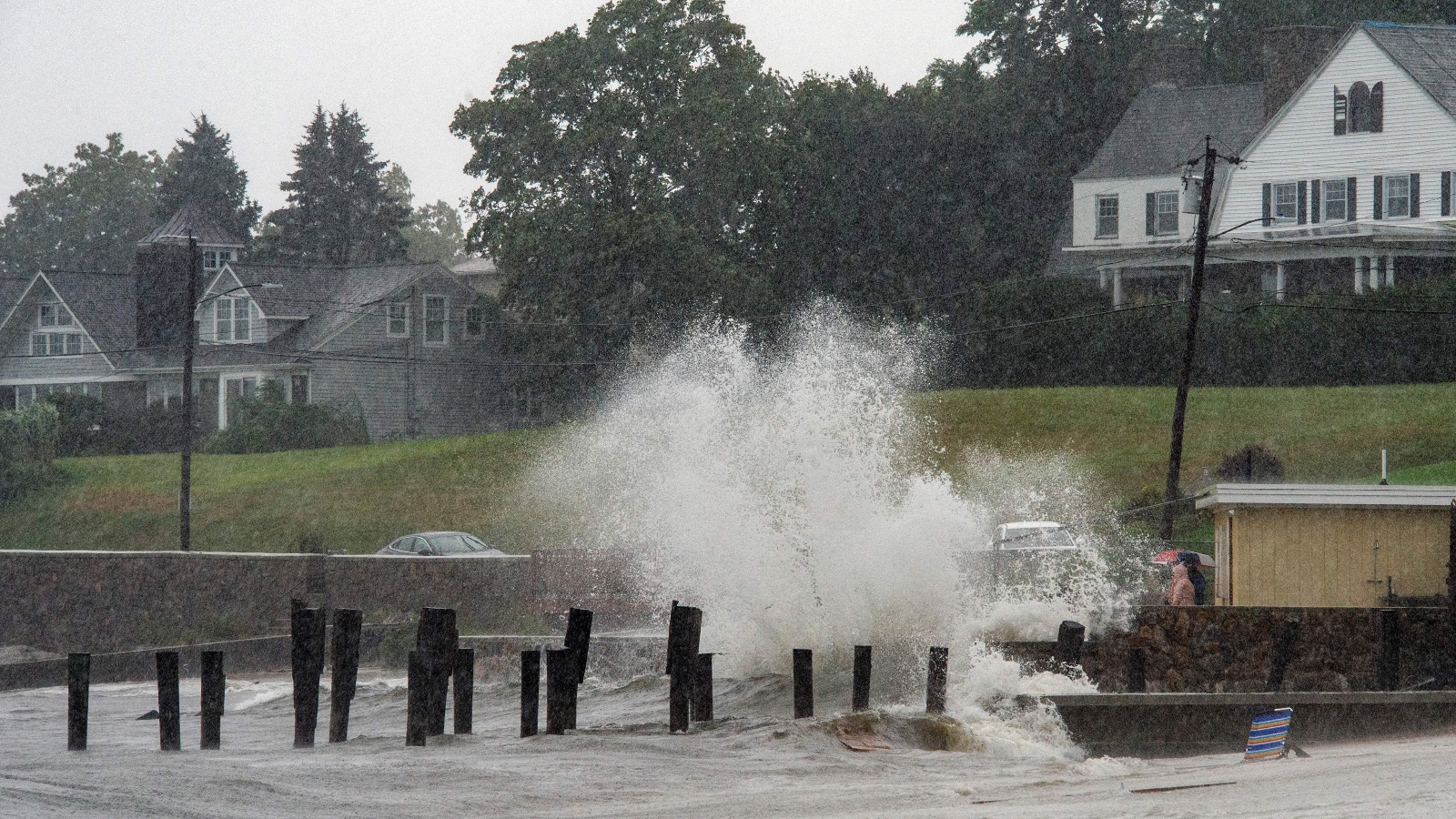
The nation’s insurance industry has gone haywire in recent years amid a succession of floods , fires , and other climate-fueled disasters . These catastrophes have forced carriers to pay out billions in claims, and many have responded by raising premiums in disaster-prone states like Florida and Oregon or leaving certain markets altogether.
But many of these companies also provide coverage for fossil fuel projects, like pipelines and natural gas power plants, that would never be built without their backing. This gives the insurance industry a unique role on both sides of the climate crisis: insurers are helping make the problem worse by underwriting the very projects that warm the earth even as they bear the costs of mounting climate disasters and pass them on to customers.
Legislation in Connecticut, the capital of the American insurance industry and home to several of its largest carriers, could make insurers pay for that contradiction. If passed, the bill, which just cleared a committee vote in the state senate, would move toward imposing a fee for any fossil-fuel projects companies insure in state. That revenue would go into a public resilience fund that could underwrite sea walls and urban flood protection measures.
“It’s important to begin to hold [insurers] accountable for how they’ve played it both ways in terms of climate change,” said Tom Swan, the executive director of Connecticut Citizen Action Group, an economic justice nonprofit that has joined several environmental organizations in lobbying the legislature to pass the bill along with several environmental organizations. “People are seeing skyrocketing rates, or they’re pulling out of different areas, and they continue to underwrite and invest in fossil fuels at a pace much greater than their colleagues across the globe,” he said.
Grist thanks its sponsors. Become one .
To support our nonprofit environmental journalism, please consider disabling your ad-blocker to allow ads on Grist. Here's How
The group pushed a more aggressive proposal last year that would have charged insurers a 5 percent fee for any fossil fuel coverage they issued in the United States, but that bill failed after critics raised several legal questions. In particular, the industry argued that the Constitution’s interstate commerce clause prohibits taxing a company’s out-of-state business.
The new version, attached as an amendment to a climate resilience bill proposed by Democratic Governor Ned Lamont, would only require the state to produce a proposal for an insurance mechanism. The surcharge would apply only to fossil-fuel projects these companies insure in Connecticut, avoiding that constitutional challenge.
The assessment would apply not only to new pipelines and fuel terminals, which require ample insurance to attract lenders and investors, but to current coverage for existing infrastructure as well. This means anyone covering the state’s dozens of oil- and gas-fueled power plants would be contributing to the resilience fund. A report from Connecticut Citizen Action Group and several other environmental nonprofits found that the state’s insurers have together invested $221 billion in fossil fuels.
Supporters argue the reduced fee would still raise tens or hundreds of millions of dollars for climate resilience. Connecticut received about $318 million in FEMA disaster aid between 2011 and 2021, or about $149 in spending per capita, according to the climate adaptation nonprofit Rebuild by Design. That puts the state well below disaster-prone locales like Louisiana, which saw $1,736 in federal disaster aid per capita, but far above those like Delaware that haven’t experienced a major disaster in the past decade.
Eric George, the president of the Insurance Association of Connecticut, the state’s largest insurance trade association, said the organization would “strongly oppose” any surcharge, but added that he was still studying the bill.
The legislation comes as other states, including Vermont and Maryland, introduce “polluters pay” bills to hold oil producers accountable for climate damages. Connecticut’s proposed law is an iteration of that effort focused on an area where state regulators wield significant influence, said Risalat Khan of the Sunrise Project, a nonprofit focused on energy transition policy.
“People are very directly seeing their premiums rise, in relation to climate disasters,” he said. “There’s a direct question there of, why aren’t state level regulators using more of their power to take local action?”
The significance of this financing mechanism could vary from state to state, says Benjamin Keys, a professor of economics at the University of Pennsylvania and an expert on climate insurance risks.
“One major issue is that the fuels are collected and burned everywhere, but the pain of natural disasters is local in nature,” he said. Because of that, he questioned whether the financing mechanism “would be feasible for all communities to emulate, because many places have [lots of] disasters hit, but very little in the way of fossil fuel production.” Florida, for instance, doesn’t have much more fossil-fuel infrastructure than Connecticut, but faces extreme weather and other catastrophes far more often.
Even though the legislation is weaker than the previous version, supporters say passing it in the home of the country’s insurance industry would send a message to big companies that are still underwriting oil and gas projects.
“I think it’s a good policy, but from a narrative-setting perspective, it’s really important,” said Swan.
A message from
Support nonprofit news today
Grist is the only award-winning newsroom focused on exploring equitable solutions to climate change. It’s vital reporting made entirely possible by loyal readers like you. At Grist, we don’t believe in paywalls. Instead, we rely on our readers to pitch in what they can so that we can continue bringing you our solution-based climate news.
Grist is the only award-winning newsroom focused on exploring equitable solutions to climate change. It’s vital reporting made entirely possible by loyal readers like you. At Grist, we don’t believe in paywalls. Instead, we rely on our readers to pitch in what they can so that we can continue bringing you our solution-based climate news.
Pentagon tries to dodge PFAS lawsuits over a product it helped invent
Epa finally cracks down on the carcinogen used to sterilize medical equipment, your tax dollars may be funding the expansion of the plastics industry, climate change and boat strikes are killing right whales. stronger speed limits could save them., detergent pods are only the start of clothing’s microplastic pollution problem, the massive copper mine that could test the limits of religious freedom, kitten season is out of control. are warmer winters to blame, heat pumps slash emissions even if powered by a dirty grid, rain comes to the arctic, with a cascade of troubling changes, modal gallery.

IMAGES
VIDEO
COMMENTS
Hull Insurance: This coverage will protect your sailboat from damage caused by accidents, such as collisions or grounding during a race. Liability Insurance: In the fast-paced world of racing sailboats, accidents can happen. Liability insurance will cover any damages or injuries caused to others during a race.
At Progressive, sailboat insurance starts at just $100 for an annual policy. Check out coverages and get a sailboat insurance quote. ... We insure most sailboats and even cover racing usage, but we do have some limitations including: sailboats over 50 feet in length and valued at more than $500,000; ...
When exploring yacht insurance options for racing sailboats, it is important to consider policies that cover race-related damages, such as collisions, grounding, and sail damage. Be sure to choose a reputable insurer with experience in covering racing sailboats and read the policy in detail before signing up. With the right insurance coverage ...
This is a company that will offer you amazing deals and discounts of up to 25% if you choose to bundle your boat insurance with at least one other policy provided by the company. What's more; they offer affordable packages for fishing equipment ($1,000), personal effects ($3,000), and towing ($500).
On average, sailboat owners typically pay between $250 and $1,500 annually to insure their sailboats. However, the cost can be higher or lower, depending on the coverage options you choose. You can expect to pay up to $4,000 per year when insuring 50-foot sailboats and catamarans. When it comes to sailboat insurance, many coverage options are ...
Sailboat Insurance: Understanding Coverage and Cost. Sailing is a wonderful hobby that provides endless opportunities for adventure, exploration, and relaxation. Whether you're a seasoned sailor or just starting out, protecting your investment with a comprehensive insurance policy is essential. ... Whether you're interested in racing or ...
Here's a few of the advantages to insuring your high performance boat with us: Customizable coverage to suit your boating style. Discounts and cost-effective coverage options to save you money. Experienced high performance boat underwriters and marine claims specialists who provide prompt, responsive service. Flexible payment options.
As previously mentioned, there are a handful of factors affecting the cost of sailboat insurance, and that makes it difficult to determine a precise average. However, coverage can vary between $250 and $1,500 per year, but likely no more than $1,000 if you're only seeking basic coverage. 1 At Nationwide, your annual premium could be as low as ...
The cost of sailboat insurance varies by the age of your vessel, its length, its motor type, and the boat's location. But, sailboat insurance usually costs a few hundred dollars a month, or between 1% and 5% of your vessel's value. For instance, if you have a $200,000 sailboat, and insurance is about 2% of its value, it could cost you ...
Boat insurance costs approximately 1.5% of the boat's total value annually. For example, a boat worth $20,000 would cost roughly $300/year to insure, while a yacht worth $200,000 could be more like $3,000 to insure. According to a MarketWatch report published in December 2022, the average cost of boat insurance last year ranged from $200 to $500.
Grand Prix Yacht Racing Insurance. If you have the need for speed, Jack Martin & Associates will provide you with the unique insurance solution for your Grand Prix Racing Yacht. We can cover your racer whether your preference is inshore, offshore, ocean or around the world racing. We have established relationships with over 20 domestic and ...
For more information about boat insurance, contact an experienced agent at NBOA Marine Insurance at 1-800-248-3512 or complete a free boat insurance quote online. NBOA offers quality sailboat insurance plans to boaters all across the USA. We will find you everything you need in a plan and cut cost on everything you don't.
Sailboats are as varied and complex as they are beautiful and versatile. That makes sailboat insurance requirements just as complicated. We cover all kinds of sailboats with insurance coverage including: At Marine Underwriters, all we do is marine insurance. Our team members are avid boaters and spend our weekends on the water.
Effective January 1, 2022, Chubb Insurance Company has clarified some of the terms of coverage under US Sailing's commercial insurance as it pertains to Certified Race Officials and Certified Instructors. This change has resulted in a change to secondary liability insurance coverage for Certified Race Officials and Certified Instructors under the US Sailing policy. Starting […]
Darrel J said: As stated above, Allstate will cover you sailboat for racing. It cost me about $250 annually for my Express 27. Broke the rig last summer. They depreciated the cost of the spar, (tube only,) at 1% per year of age. That meant I paid 30% of the spar cost.
Craftinsure Racing Yacht Insurance Updated 2020. Our Craftinsure Racing Yacht Policy is Fully Comprehensive, All Risks cover. It's Plain English and has been specifically designed for Racing Yachts valued up to £600,000. For values above please ring us 0345 2607 888. Cover has been specially written for Racing Yachts based in the UK, cruising ...
High performance boat insurance. Your high-performance boat is designed for excitement. With Hagerty and Markel, it's easy to make sure you have coverage created specifically for you and your boat needs. Designed for boats 26ft and over with watercraft speeds from 65 to 120 mph. Get a quote.
Each boat, person, location and situation is different. There isn't a good way to give a "ballpark" figure for how much coverage you need. It's best to evaluate your comfortable level of risk when protecting your boat, assets and passengers. Your best option is to call our boat specialists at +1.800.236.2453 to discuss the best coverage for you.
The company was founded in 1977 by Dick Fournier in Montesano, Washington, and not only covers boat insurance, but personal, business, life, and other specialized industry insurance. Email: [email protected] / [email protected]. Website: fourniersolutions.com. Contact: (253) 473-3010. NWY: So, you've noticed a change in ...
A comprehensive boat insurance policy should cover: COLLISION COVERAGE including hitting another boat, boating accidents, such as hitting a submerged object, dock, or another boat. COMPREHENSIVE COVERAGE including theft, vandalism, fire, sunken boat, common risks, grounding, and damage on the water from weather.
It'll probably only cost a few hundred dollars per year to insure an average-sized (30-foot) sailboat. And while size plays a part, these insurance policies are usually calculated based on value. For example, a sailboat worth $20,000 costs an average of $300 per year to insure.
For a quote for watercraft racing insurance, don't hesitate to get in touch. Our website has more on our extensive product line and a facility to request a quote or send us a message. You can also reach us using the following details: Phone: 877.585.2853. Email: [email protected]. Events calendar.
Essential yacht racing skills; Catamaran sailing; Bluewater sailing techniques; ... Unlike car insurance, boat insurance is a very specific product and it requires a tailor made approach. Most ...
On Thursday, Cole Brauer made history, becoming the first American woman to sail solo nonstop around the world. The 29-year-old from Long Island, New York, celebrated at the finish line in Spain ...
The southern oceans of the Atlantic and Pacific that Brauer endured alone in her 30,000-mile sailboat voyage brought her face-to-face with bigger waves and storms than most people will ever see ...
The nation's insurance industry has gone haywire in recent years amid a succession of floods, fires, and other climate-fueled disasters. These catastrophes have forced carriers to pay out ...